“MARHABA!” is the traditional greeting used in Morocco to mean a warm “hello and welcome!”
Morocco is rich in both history and culture, but navigating the country as a foreigner could have been challenging given the language barrier and the narrow, winding streets of the medinas. From the moment we landed at the Casablanca airport, until being escorted through immigration in the ‘fast pass’ lane in Marrakesh airport upon our departure, our group of 8 (welcome Renee and VerNeil, Faith and Garrett!) was so happy to have the excellent services of our guide, Samir, our driver Hassan, and other local guides and ‘handlers’. A big thank you to Khashana Travel once again for orchestrating the perfect Moroccan Adventure for us!
We started our Morocco trip in the historic city of Casablanca.
Having just come from Egypt, the contrast from the dusty streets of that still-developing and heavily populated nation to the lush greenness and modern business parks of Casablanca caught us a bit off-guard. Of course, Morocco is a mere few miles across the Strait of Gibraltar from Europe and was colonized by Spain in the 1700-1800s and by France in the 1900s, so it is much more ‘European’ than other African countries further to the east. Originally settled by Berbers in the 7th century, Casablanca’s relatively recent growth has made it the bustling, French-influenced business center of Morocco it is today.
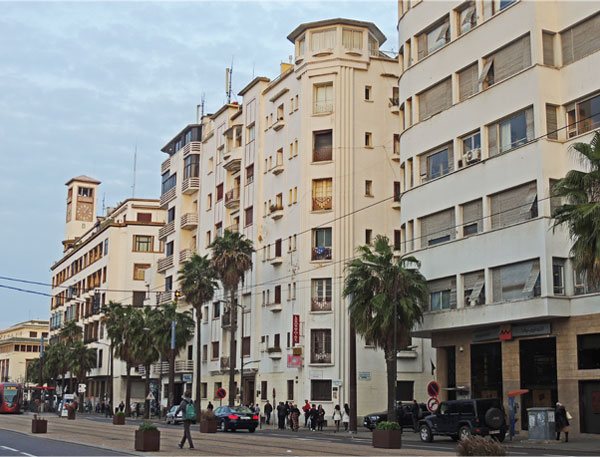
The mere name Casablanca evokes thoughts of good living, romance and adventure in a tropical setting, an image that the 1943 Humphrey Bogart film conveyed to cinema-goers in the drab years of World War II. So……although we only had an afternoon and morning to explore, we had to make sure to visit a replica of Rick’s Cafe from the movie – a tourist-y joint to be sure – but a fun place to conjure up images of 1940s Casablanca.
Casablanca’s Grand Mosque

Before leaving the next morning, we toured Casablanca’s (recently completed) magnificent Hassan II Grand Mosque, one of the two mosques which can be visited in Morocco.
Built on reclaimed land, almost half of the surface of the mosque lies over the waters of the Atlantic Ocean. This was inspired by the verse of the Qur’an that states “the throne of God was built on the water”. Hassan II Grand Mosque is one of the largest in the world and can house as many as 25,000 worshipers. The mosque’s minaret is the tallest religious structure in the world. Lasers shine at night from the top of the minaret toward Mecca.
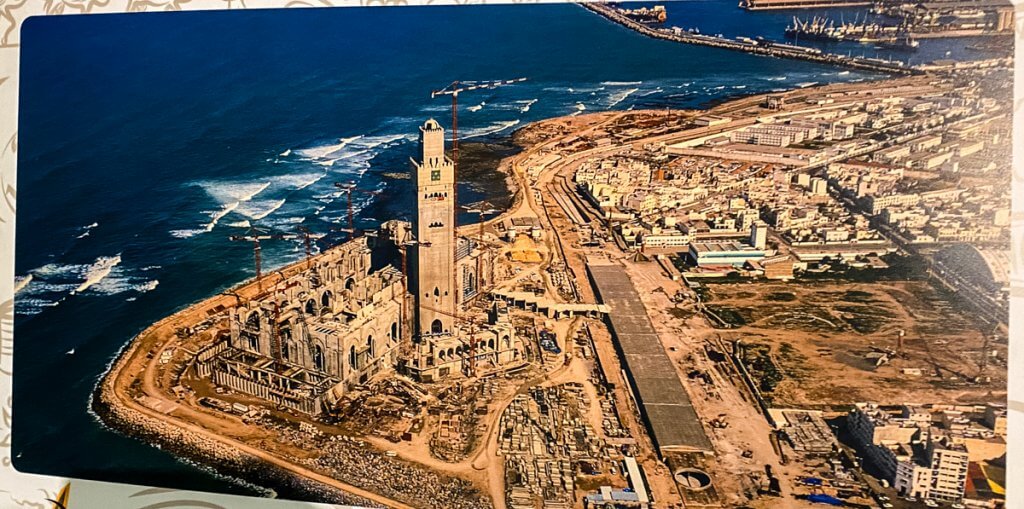
During Construction
Rabat, the capital of Morocco
Upon leaving Casablanca, we made the 4-hour journey to Fes stopping halfway in Rabat, which is the capital of Morocco. We visited the Mausoleum of Mohammed V which contains the tombs of the Moroccan king and his two late sons, King Hassan II and Prince Abdallah. We found the esplanade particularly interesting. Hassan Tower is the minaret of an incomplete mosque commissioned by Abu Yusuf Yaqub al-Mansur, the third Caliph of the Almohad Caliphate in 1195. Both the tower and the mosque were intended to be the largest in the world. When al-Mansur died in 1199, construction on the mosque stopped. The tower reached 44 m (140 ft), about half of its intended 86 m (260 ft) height. The rest of the mosque was also left incomplete, with only the beginnings of several walls and 348 columns being constructed.
Fes, the intellectual heart of Morocco
Fes gets its nickname from an abundance of schools and universities. At the city core is the Al-Karaouine (or University of al-Qarawiyyin), which was founded in 859 AD and is considered the oldest existing, continually operating higher educational institution in the world according to UNESCO.

Architecture
We stayed right in the heart of the Fes medina at a luxurious property originally built in the 1930’s by a noble Fassi family and lovingly restored to its former splendor. The history of this Imperial city is reflected in the Moroccan-Andalusian architecture and the exquisite attention to decor details.
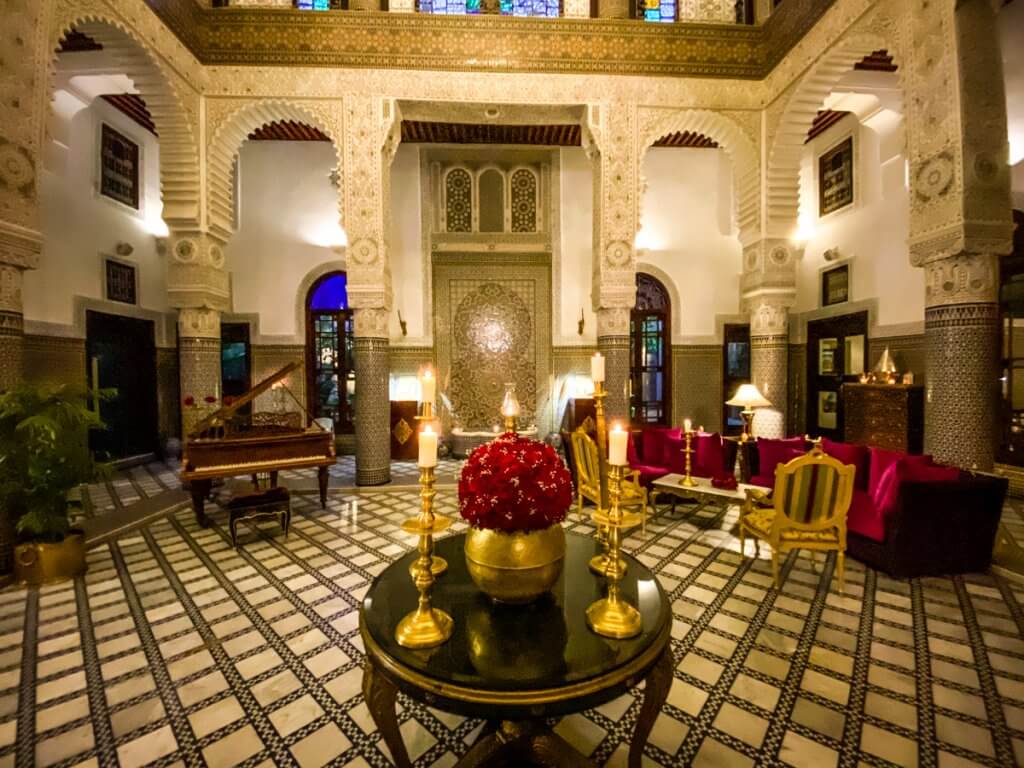
The lobby of our hotel, the Riad Fes. 
Looking up in the lobby of our hotel, the Riad Fes. 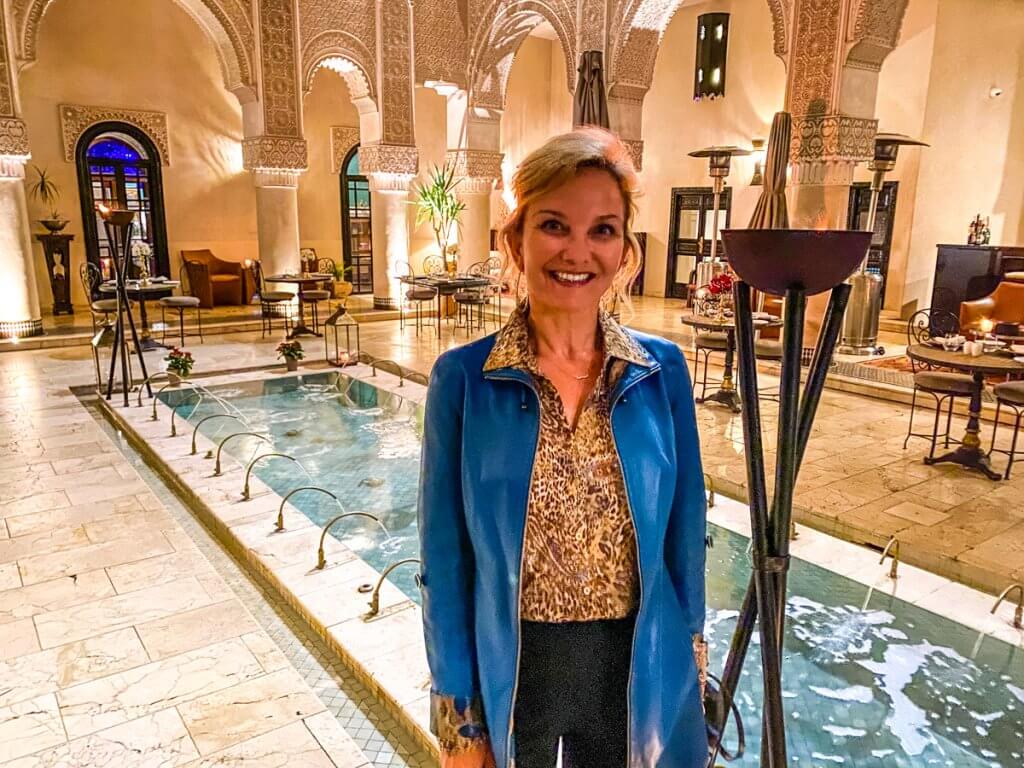
The fountain courtyard in the Riad Fes. 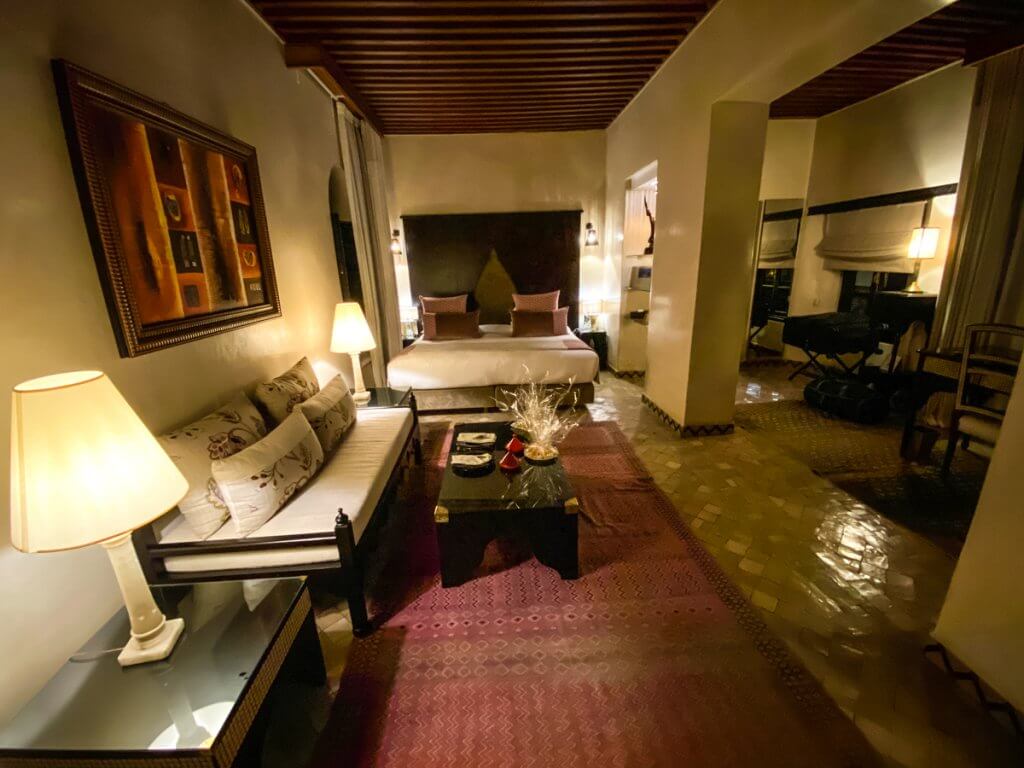
Luxurious rooms! 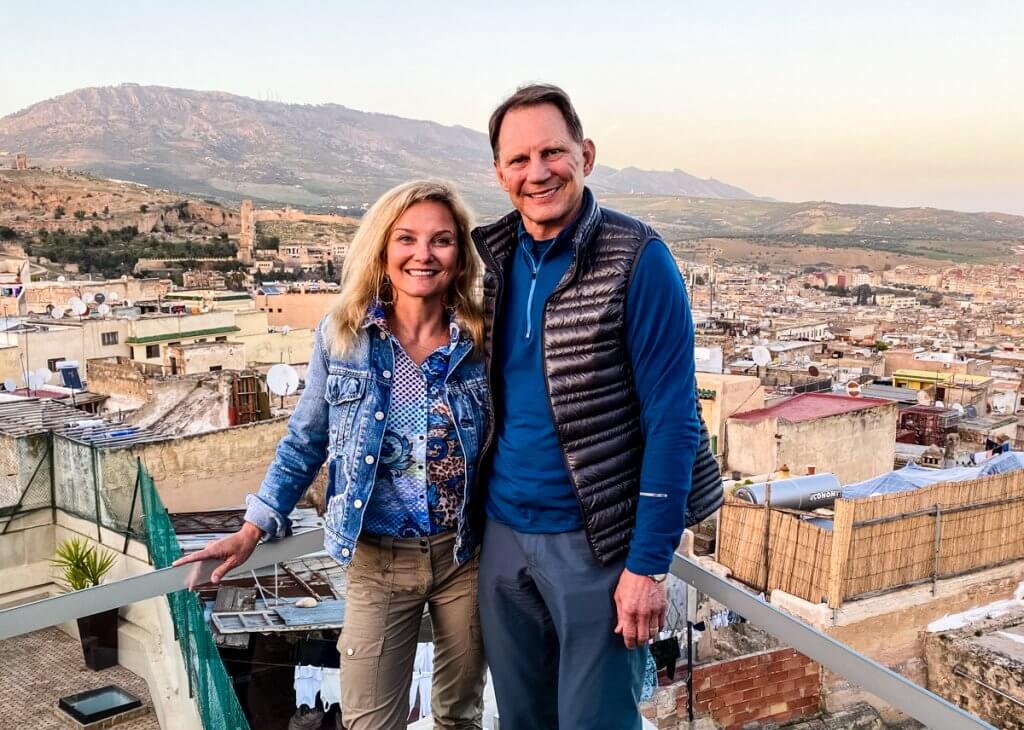
A view of Fes from our hotel’s rooftop bar. 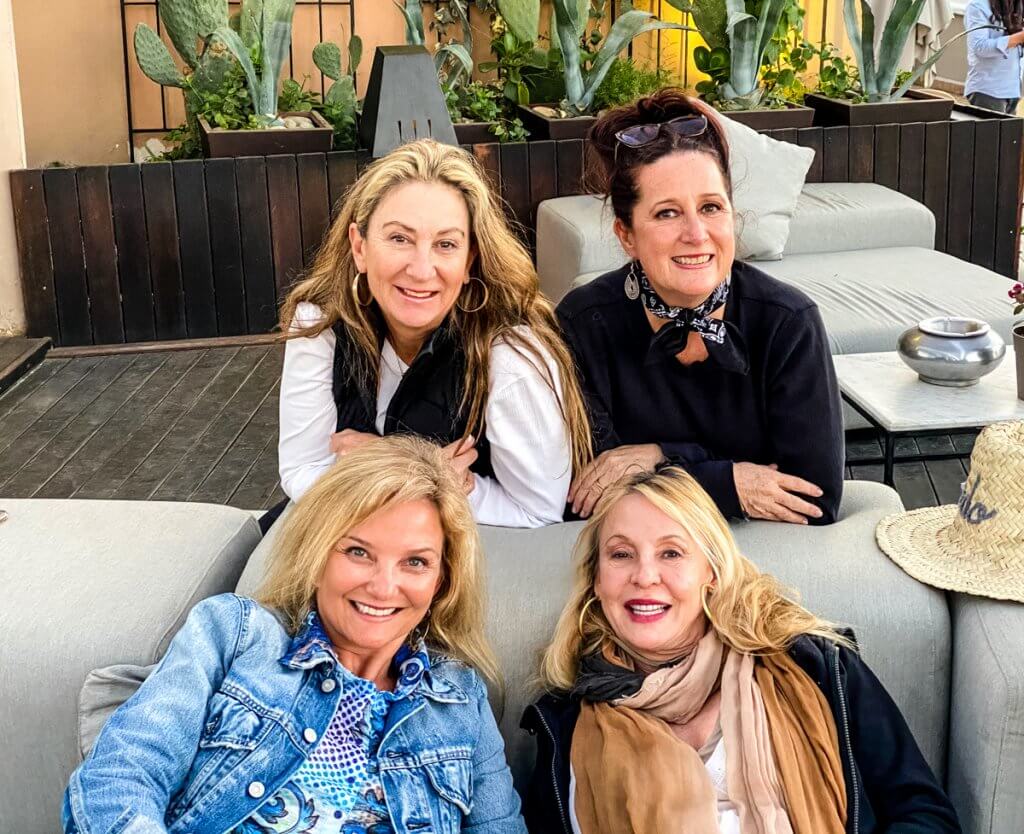
A view of lovelies in our hotel’s rooftop bar. 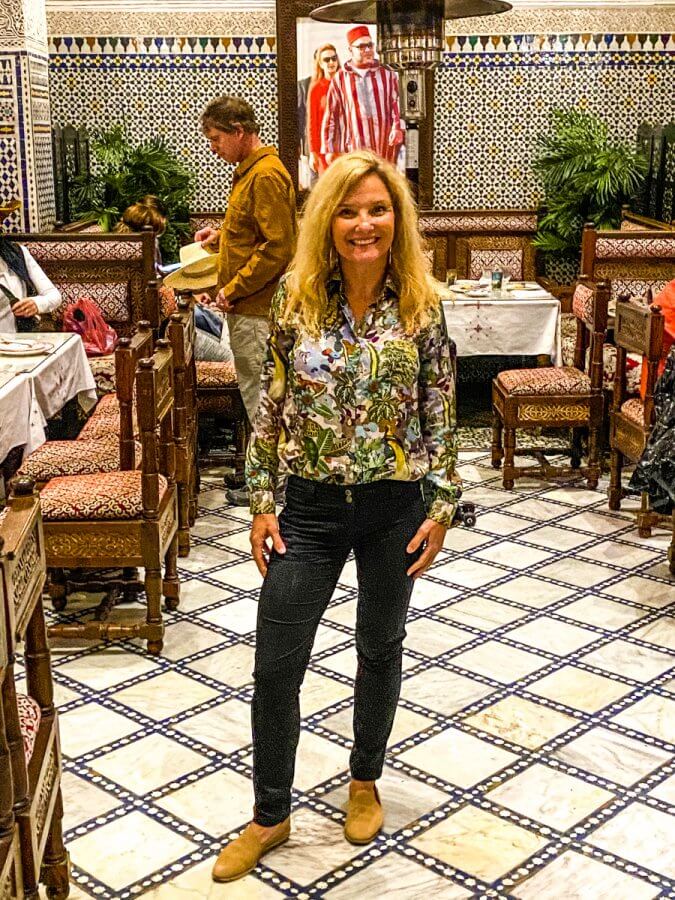
One of our lunch restaurants was in a converted house. 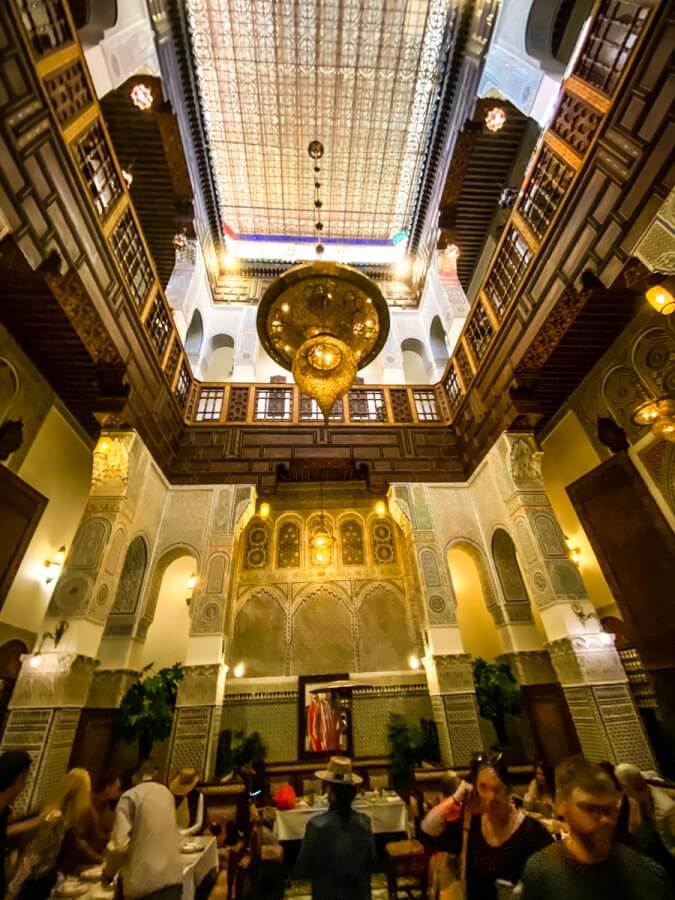
Looking up in the restaurant. 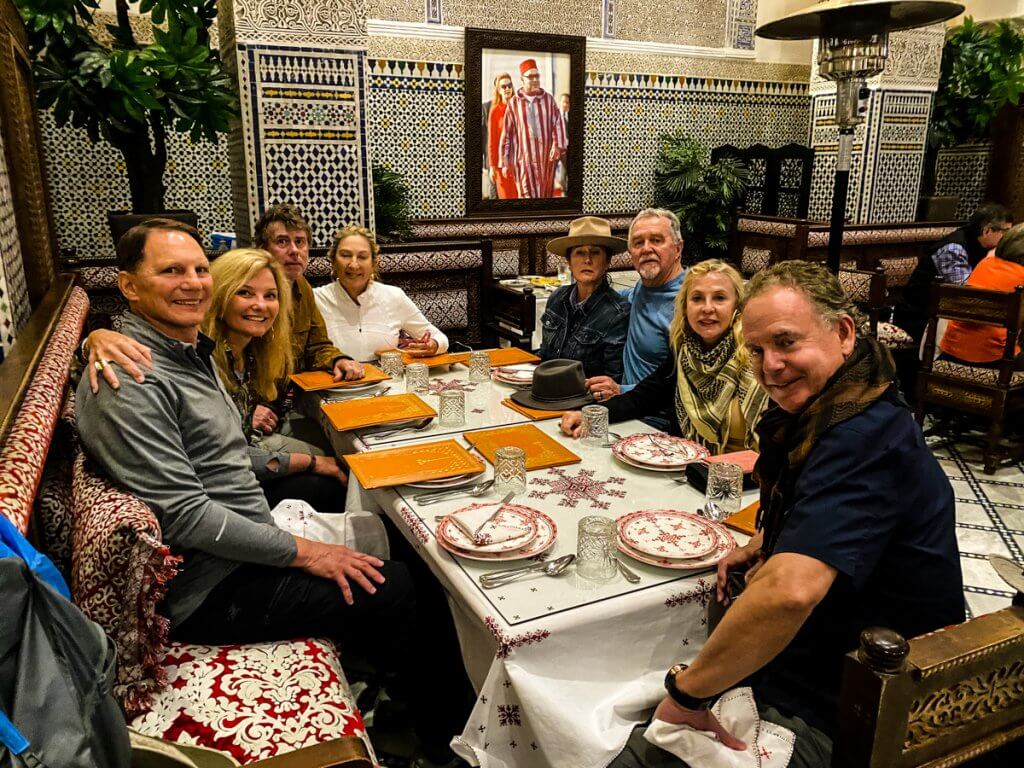
Our intrepid travelers at lunch. 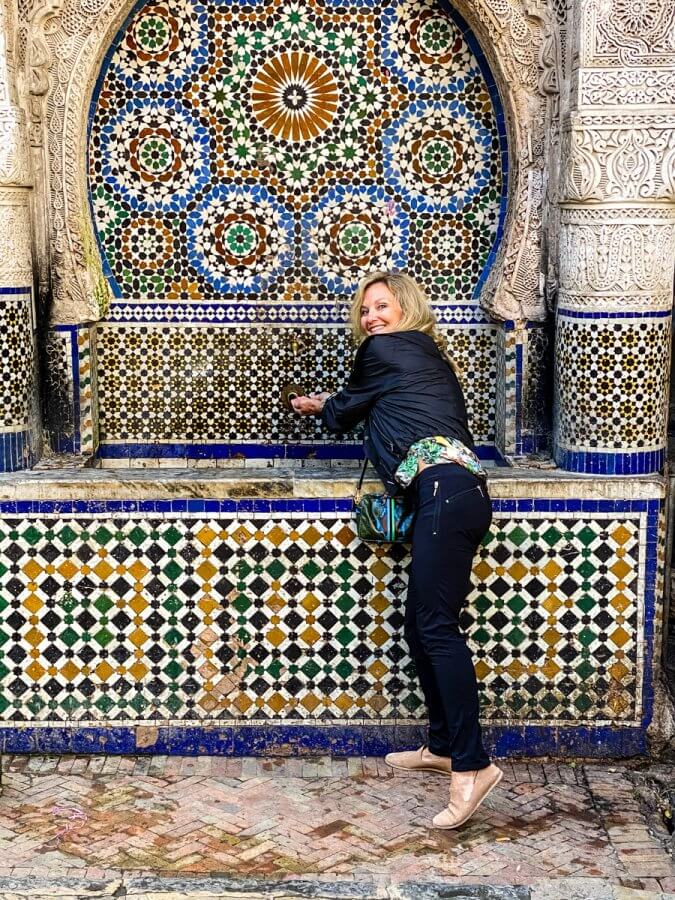
The public Nejjarine Fountain one of the oldest of its kind in Fes, dating back to the 17th century. 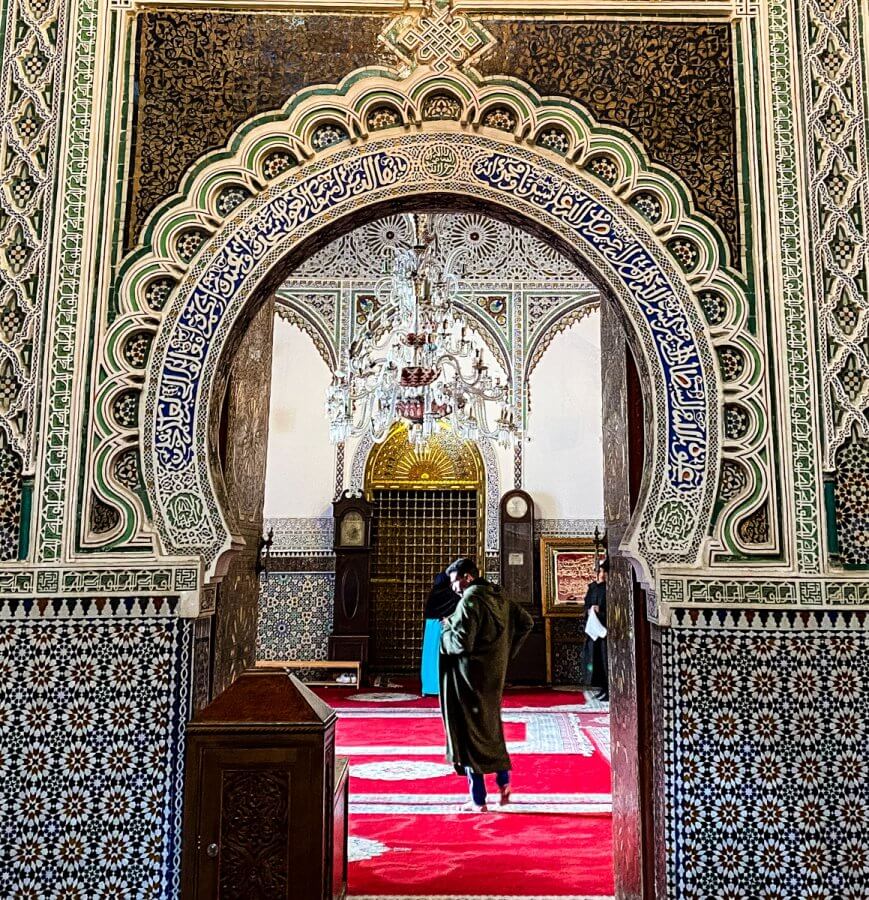
A view into one of the oldest mosques in Fes. 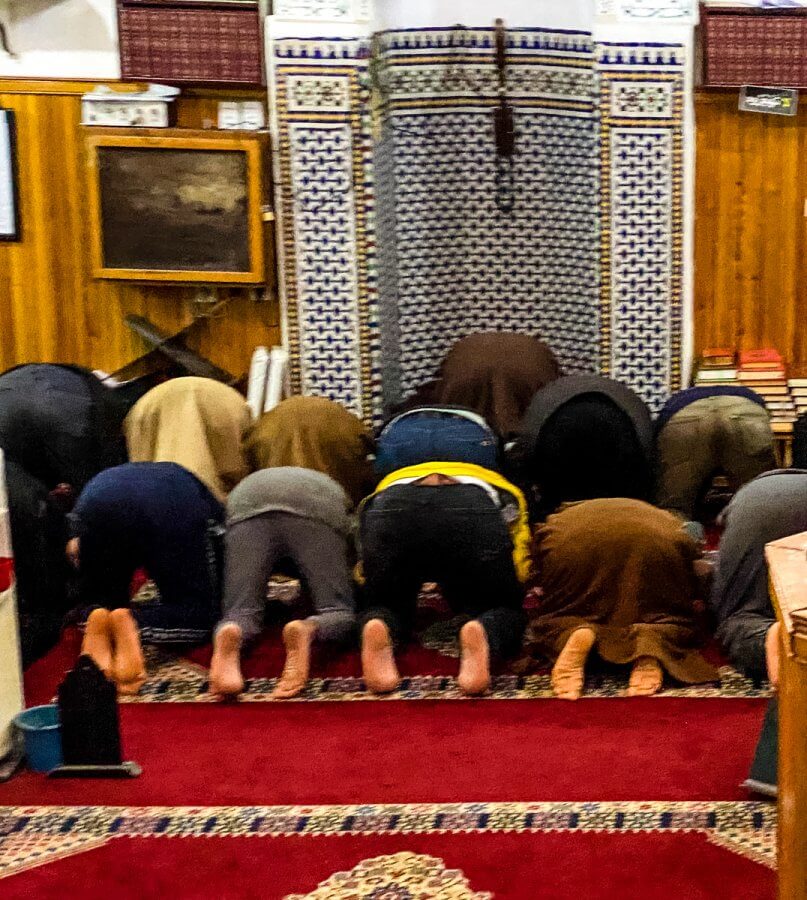
Another view of a mosque during early afternoon prayers. 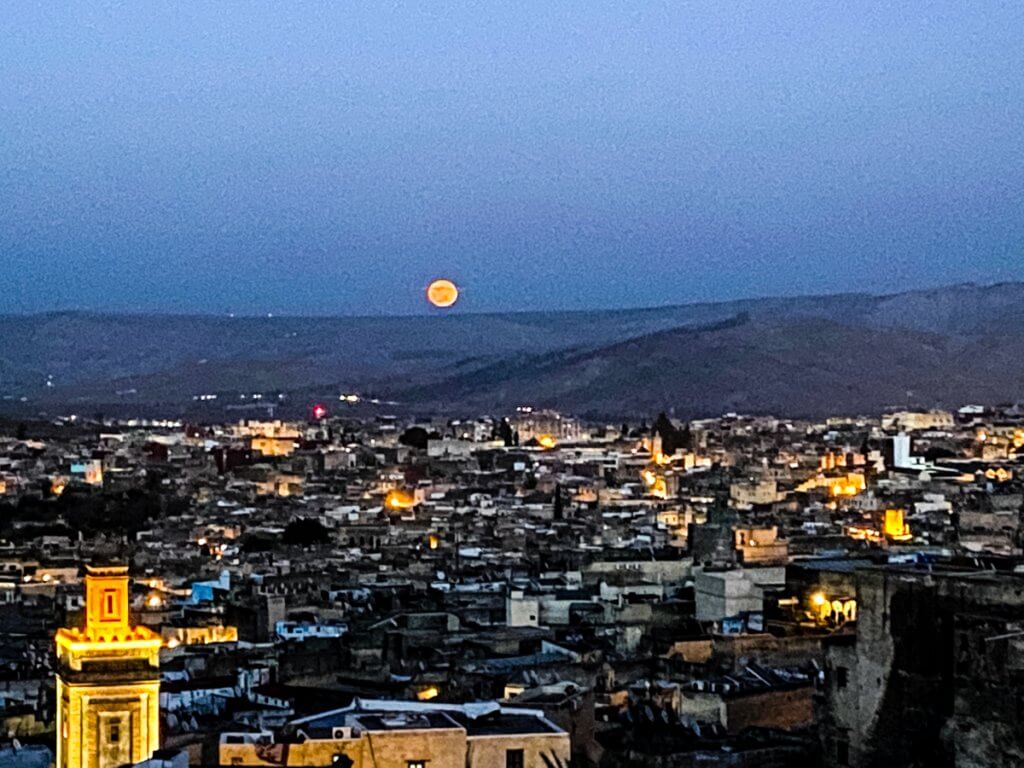
Stunning moon-rise over Fes.
The Medina
We stepped back in time to the Middle Ages at Fes El Bali, the world’s largest living medieval (since 800 AD!) medina-city and the cultural heart of Morocco. Home to 9,000 narrow lanes, alleys and souks that make up the labyrinth of the city’s old quarter, the medieval Fes Medina is a UNESCO World Heritage Site. With a total population of 156,000 people living within its walls, it is also believed to be the biggest car-free urban area in the world.
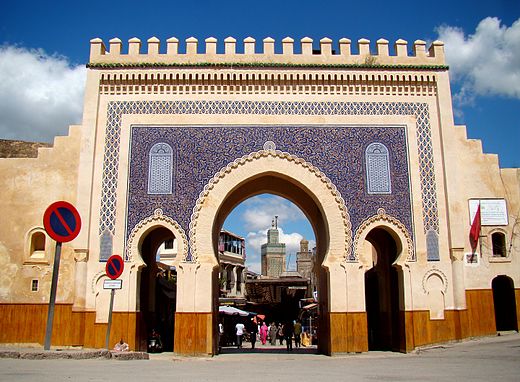
The Bab Bou Jeloud gate, leading into the old medina of Fes.

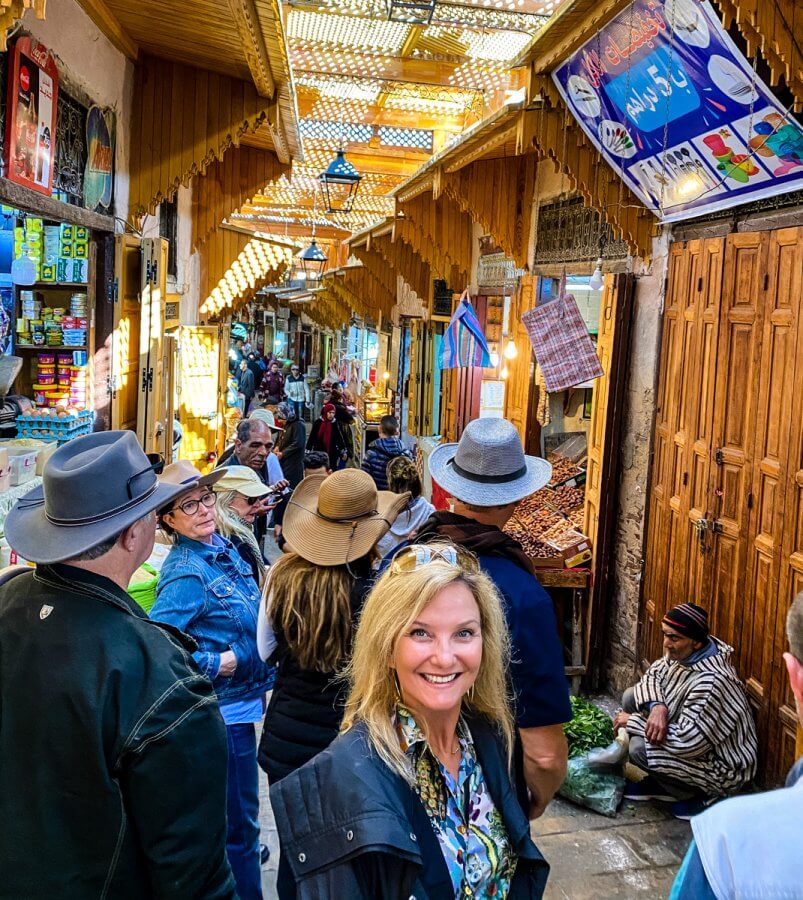
We experienced a wide range of souks on the inside of the old Medina which reflected everyday life. 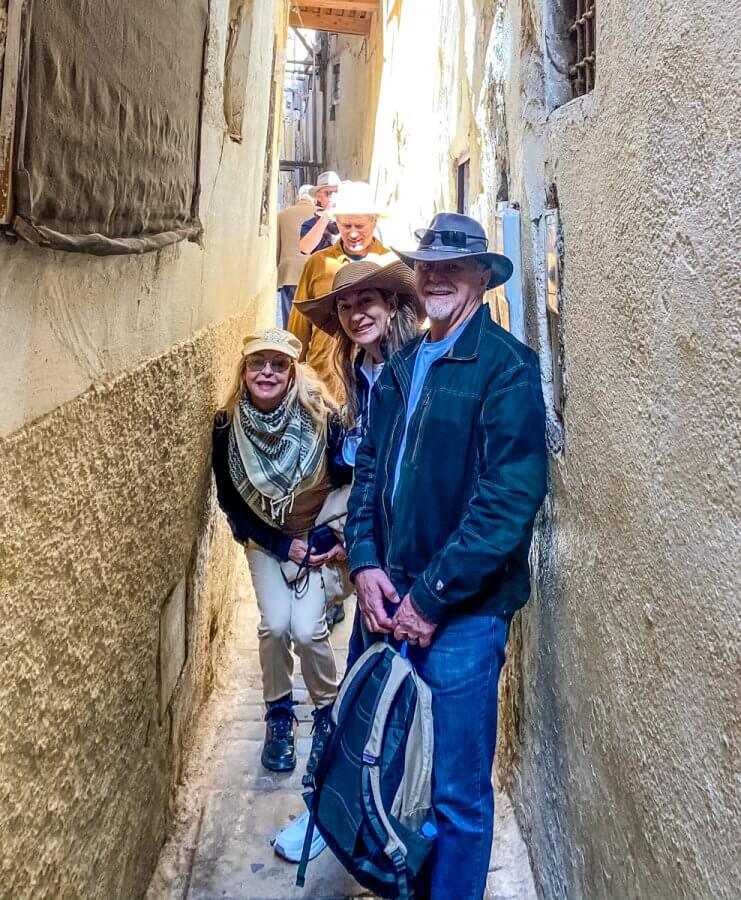
Narrow lanes.
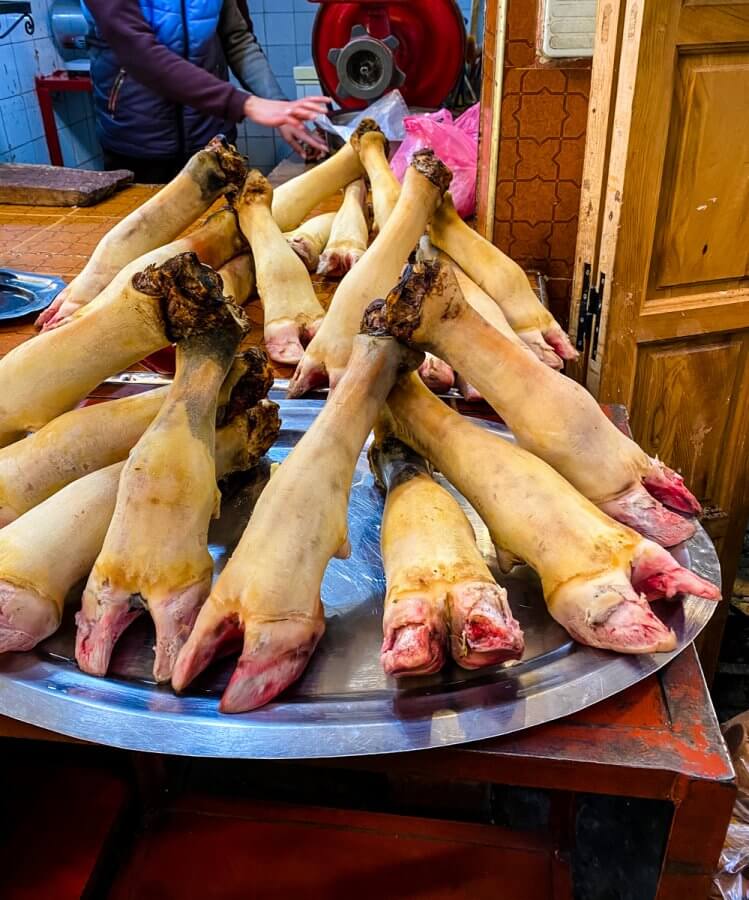
Camel toes anyone? (tee-hee) 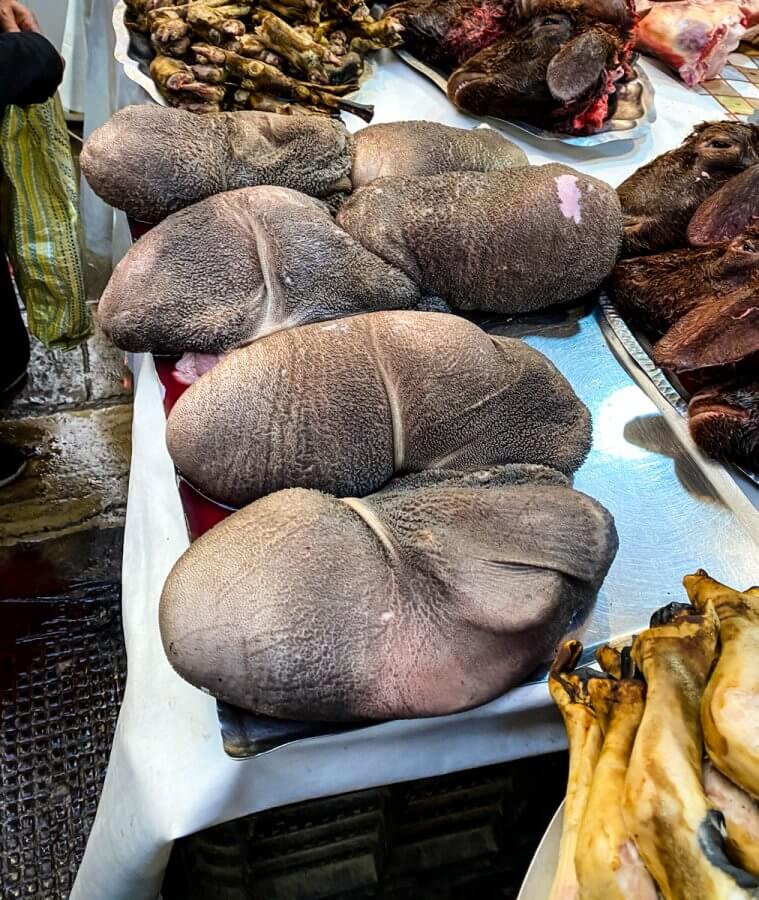
No? How about camel livers? 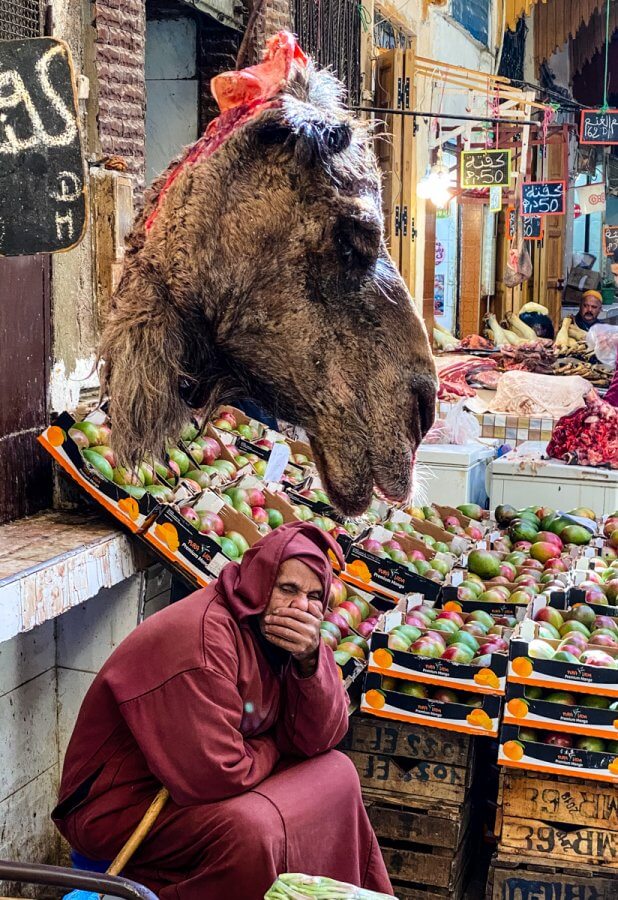
Or….maybe a camel head? 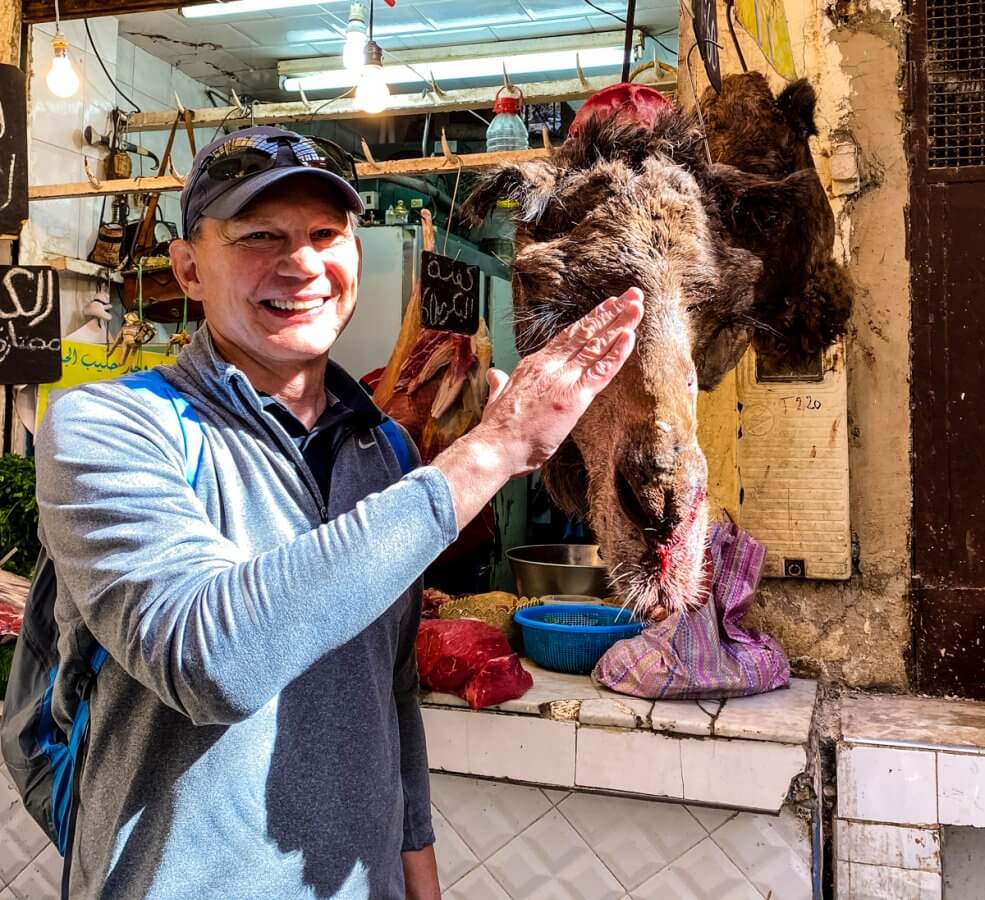
Sweet. 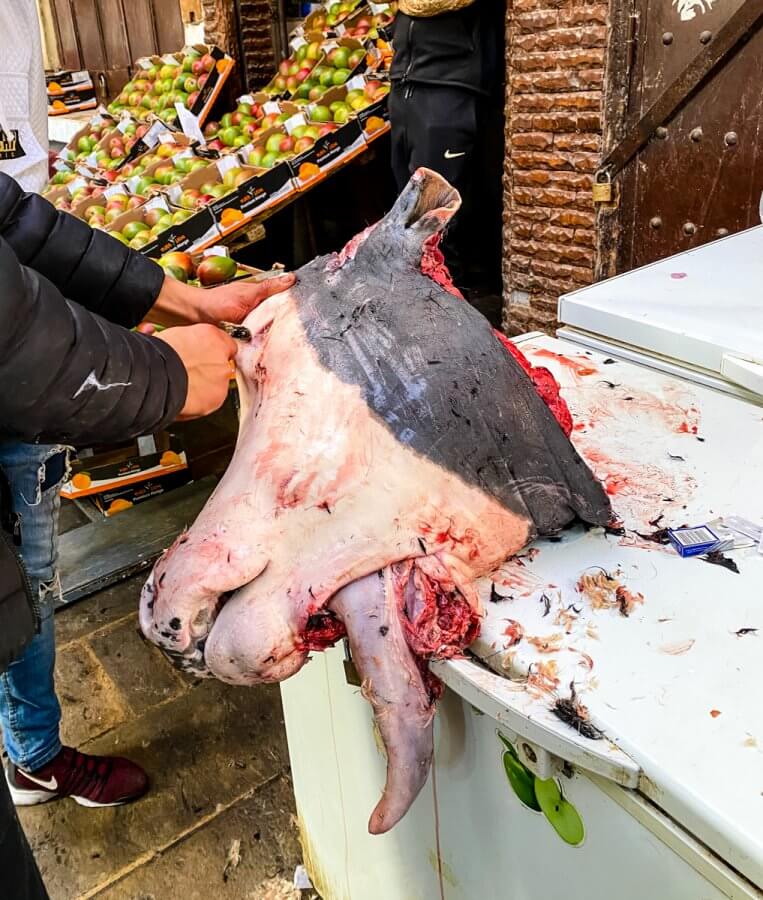
Perhaps a cow’s head is more appealing. 
Appealing is all relative, eh? 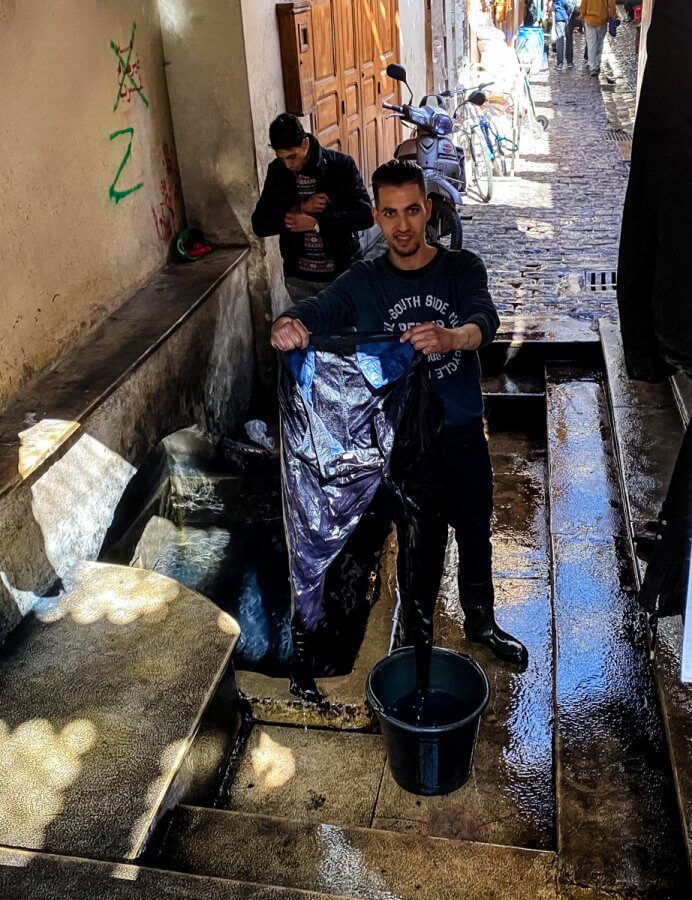
Fabric dying. 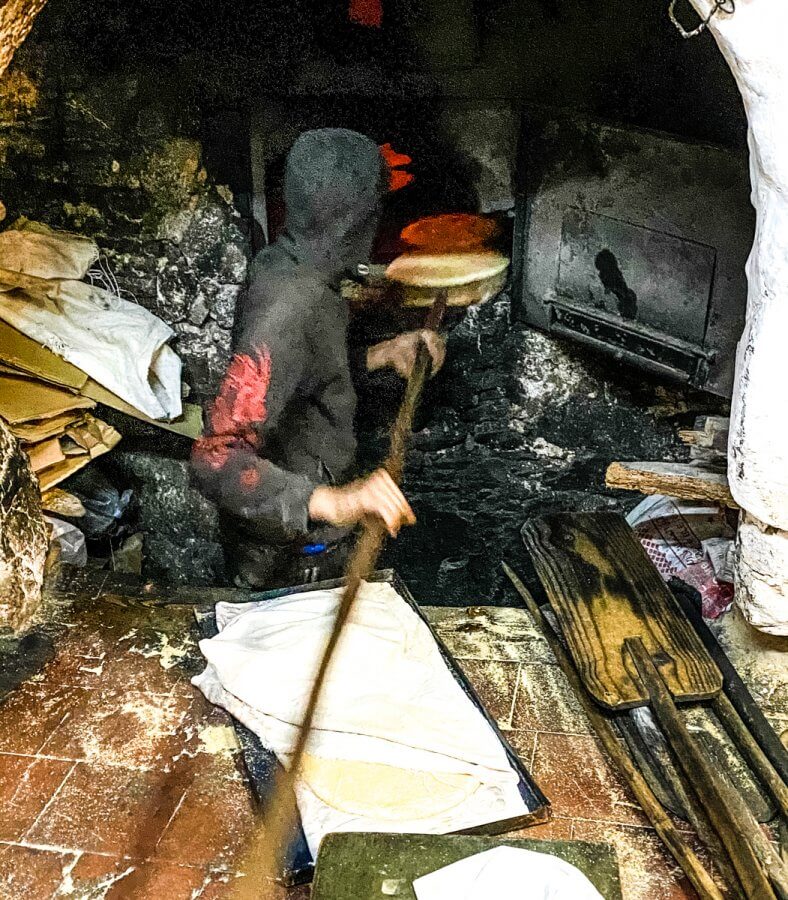
The public bread oven. Just bring your already-made loaves from home…. 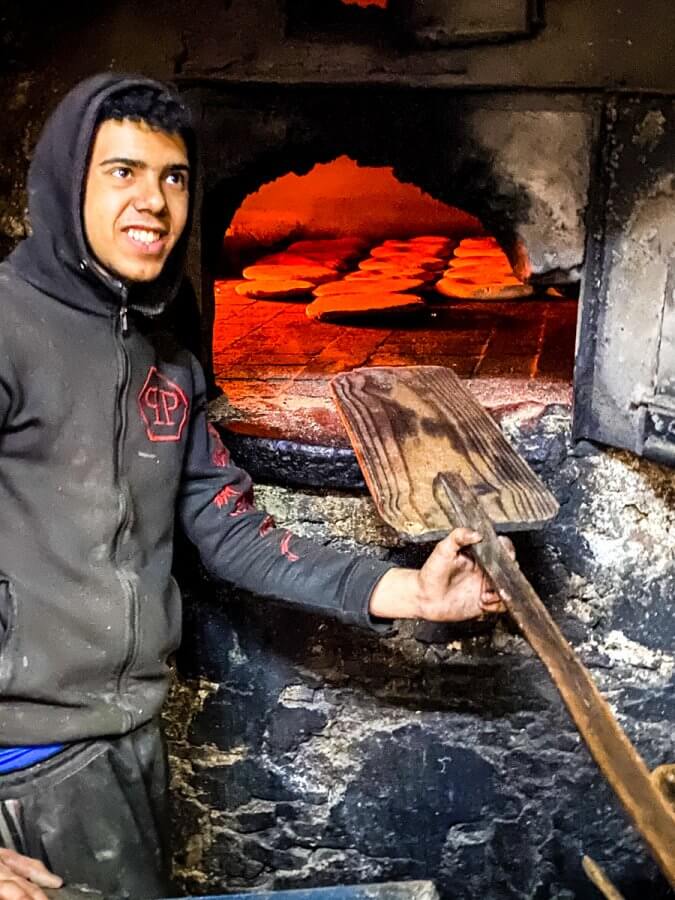
… and the baker fires them up so you don’t need your own huge oven! 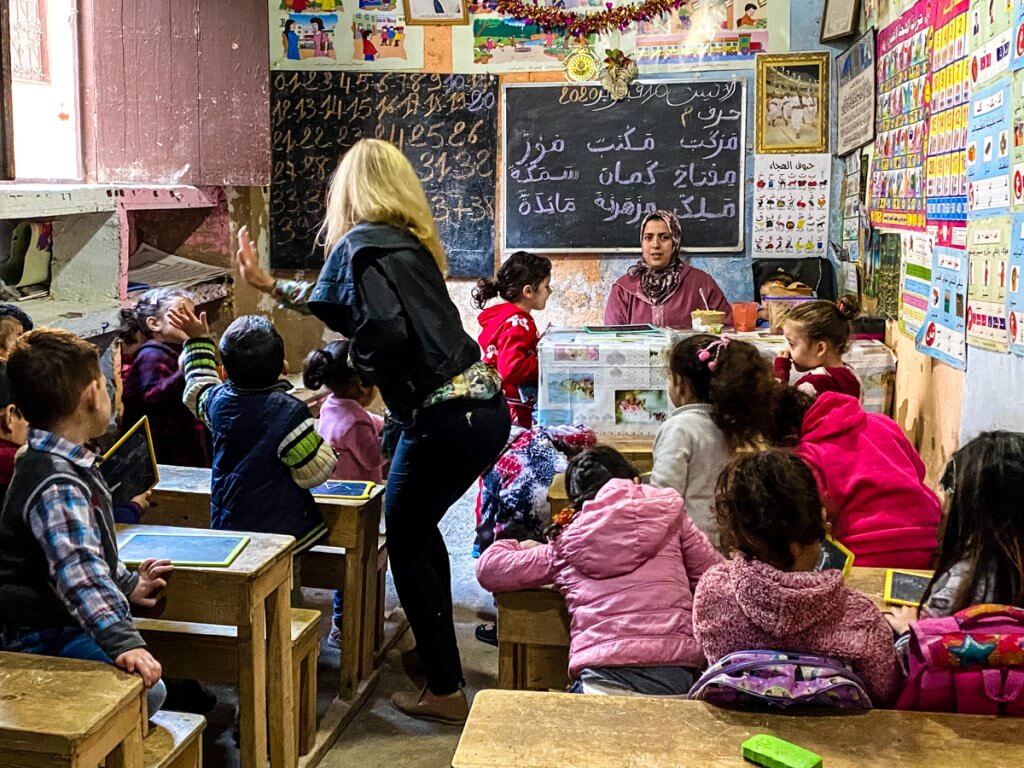
These kids loved practicing their high-fives; and 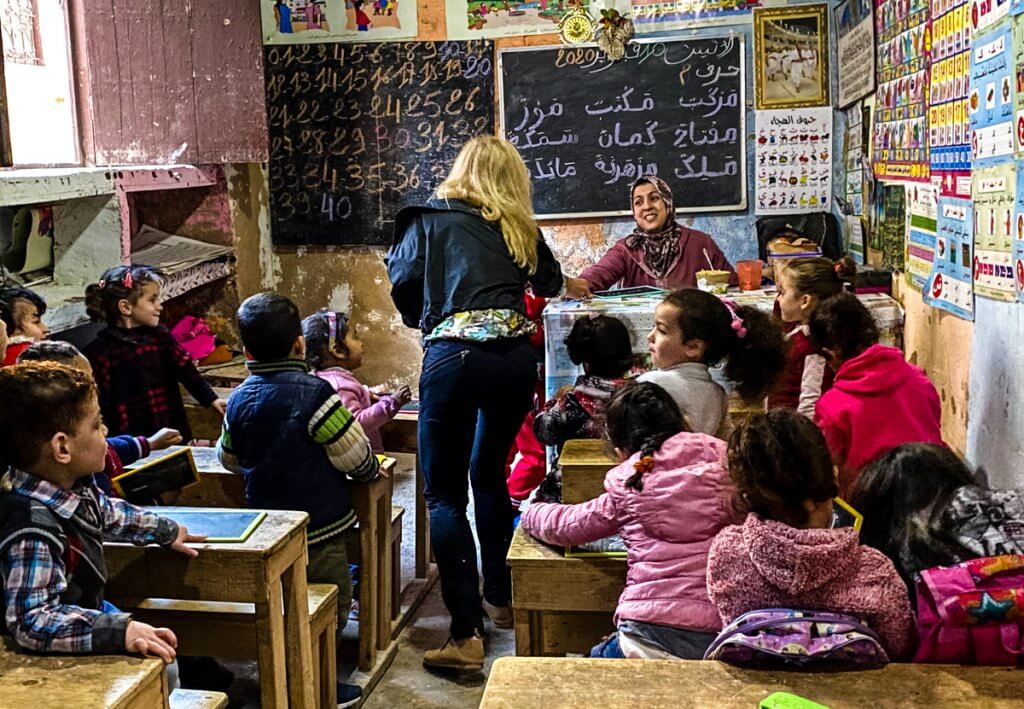
and their English, with Shauna. 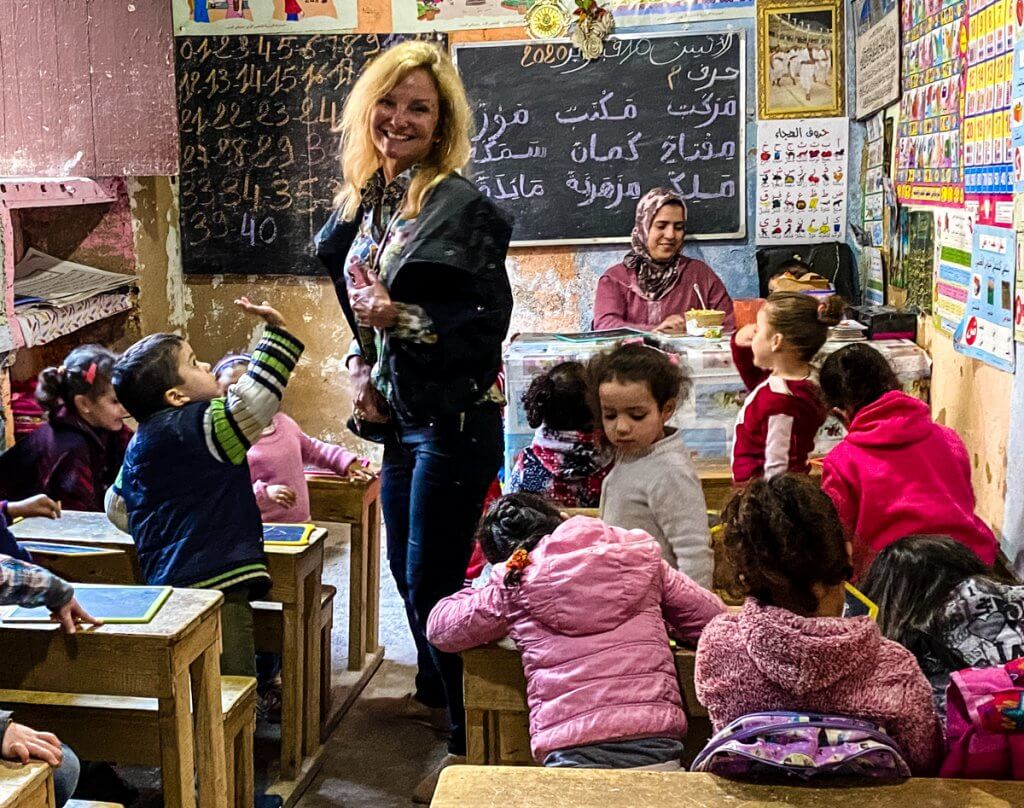
One more for the road!
The Tannery
The leather produced in Fes is renowned worldwide. During our visit to the tanneries we learned about the different methods that are used to process the skins of cows, sheep, goats, and camels to prepare them for the beautiful leather goods seen at the markets. The entire leather production process comprises manual labor only and involves no modern machinery, and has retained methods unchanged since medieval times.
The origins of the gag-producing odors? Not the animal skins themselves, but the solutions of cow urine, pigeon feces, quicklime, salt, and water used to remove the hair and soften the skins. This process takes two to three days and prepares the hides to readily absorb the dyes. Friday is ‘pigeon poop’ collection day, when the citizens of Fes sell their home-grown-and-collected pigeon droppings to the tanneries. Aren’t you glad that wasn’t one of your chores at home?
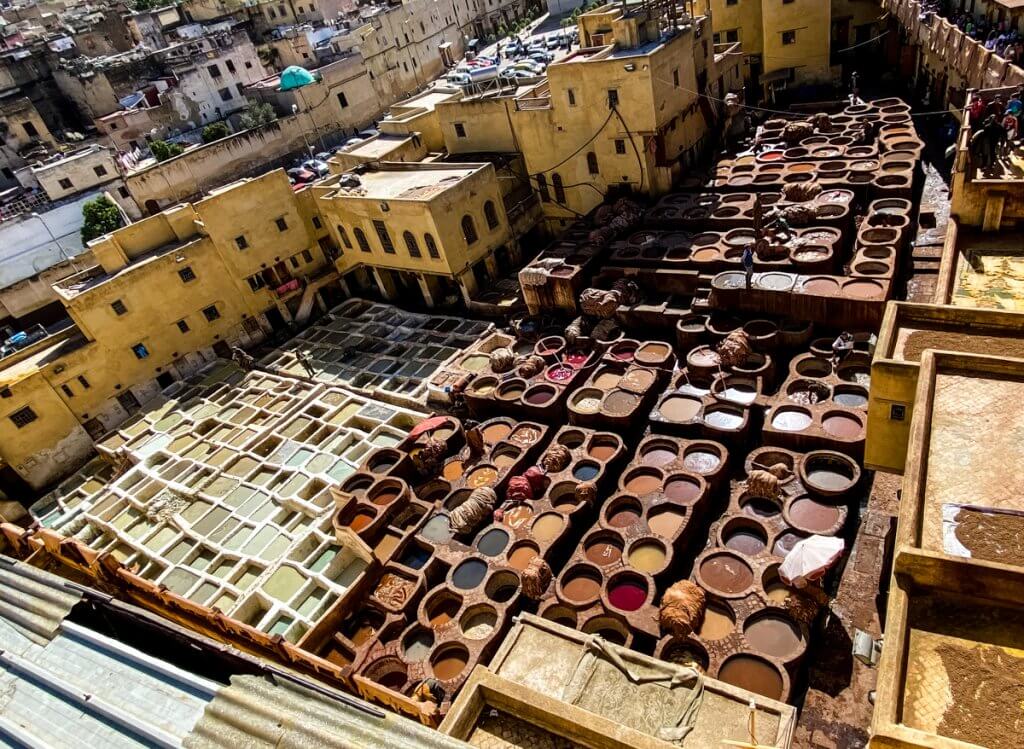
After cleaning, the skins are then soaked in the dyeing solutions, which use natural colorants such as poppy for red, indigo for blue, and henna for orange. 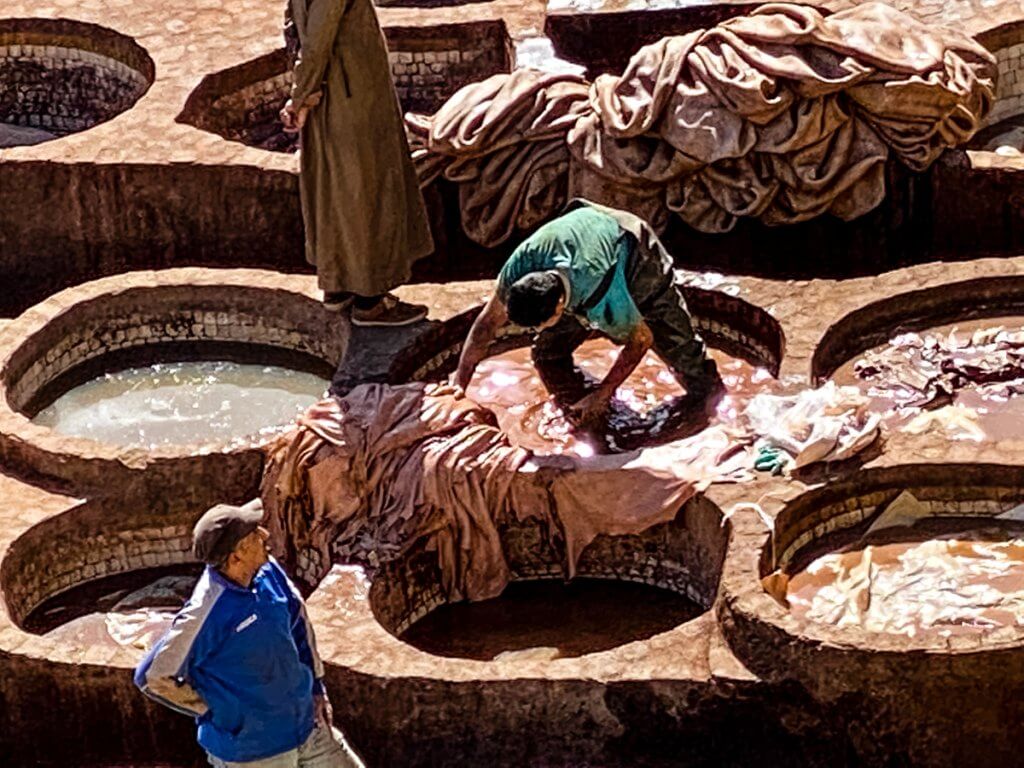
After the dyeing, the skins are dried under the sun. The resulting leather is then sold to other craftsmen, who use it to produce Morocco’s famed leather goods, such as bags, coats, shoes, and slippers, prized for their high quality.
Fes Pottery
During a visit to a pottery factory we discovered how the beautiful zellij tiles are made. These tiles are fantastic examples of Arabo-Andalusian décor and are also used in the manufacture of the famous tagine dishes.
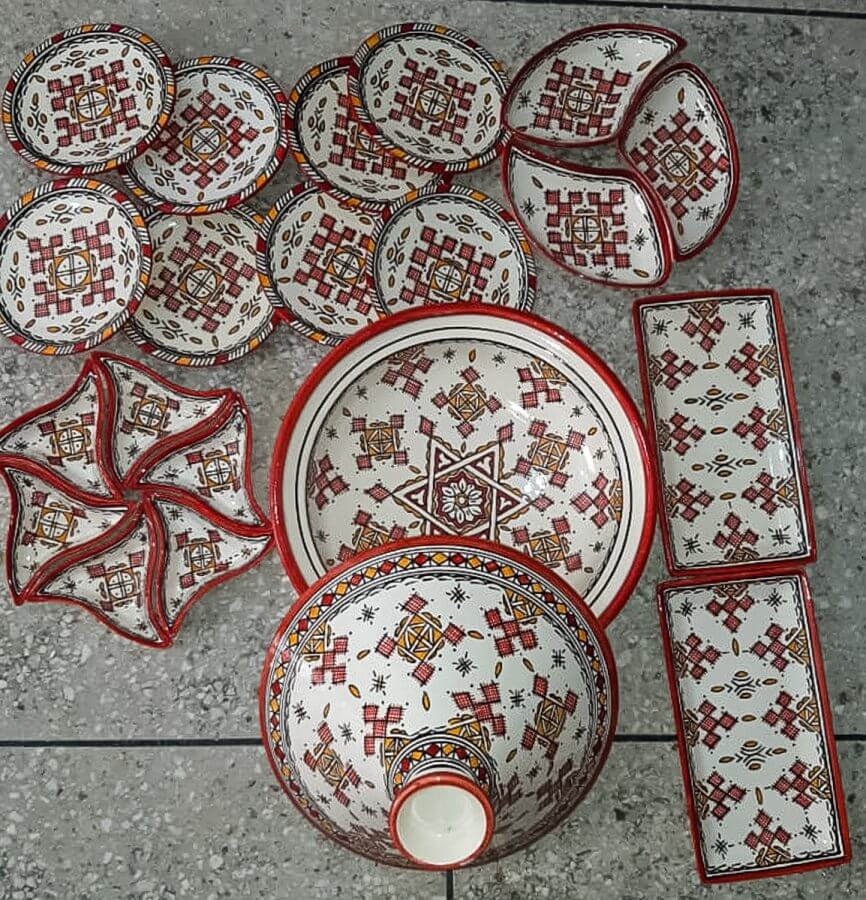
After viewing the artistry by the members of this co-operative, we couldn’t help but design and purchase this unique pattern for our home in Whistler. Elements from 3 cultures – Jewish, Arabic and Berber – are all represented in the design’s patterns.
Parting pics of Fes….
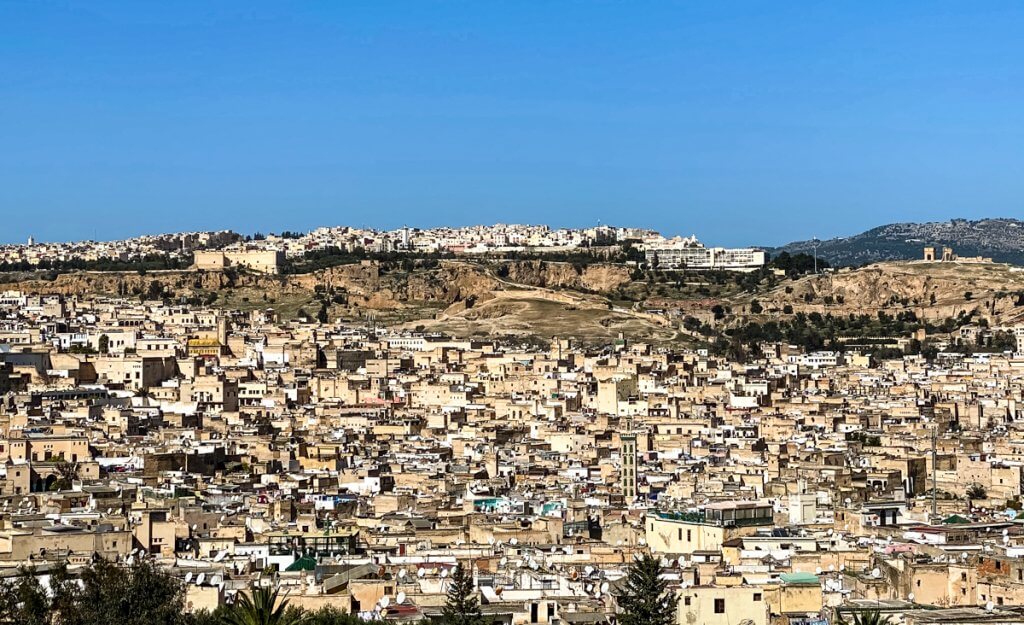
A panoramic view of the medina of Fes. 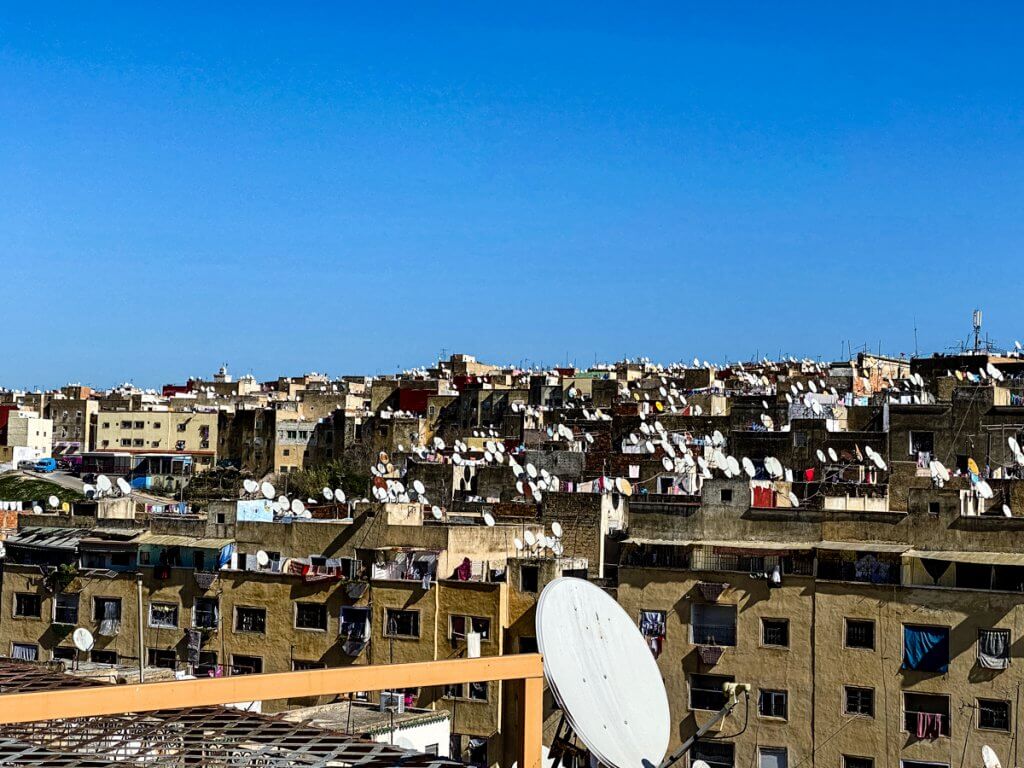
The ubiquitous satellite dishes. 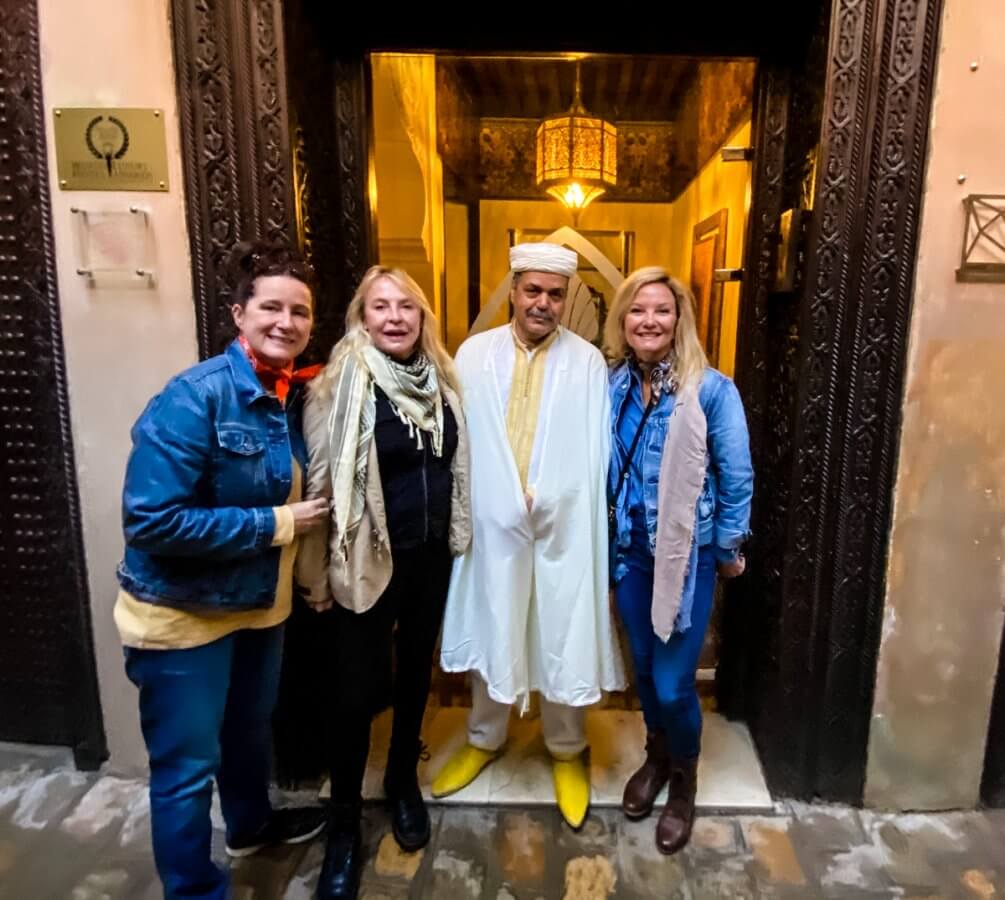
Saying goodbye to exceptional service at the Riad Fes.
Chef Najat Kanaache‘s Nur Restaurant – our favorite meal in Fes
Volubilis
Volubilis is a UNESCO World Heritage Site and “an exceptionally well preserved example of a large Roman colonial town on the fringes of the Empire.” These are the largest and best-preserved Roman ruins in Morocco.
The ruins remained substantially intact until they were devastated by an earthquake in the mid-18th century and subsequently looted by Moroccan rulers seeking stone for building Meknes. Not until late in the 19th century was the site definitively identified as the ancient city of Volubilis.
During and after the period of French rule over Morocco in the first half of the 1900s, about half of the site was excavated. Many fine mosaics were revealed, and some of the more prominent public buildings and high-status houses were restored or reconstructed.
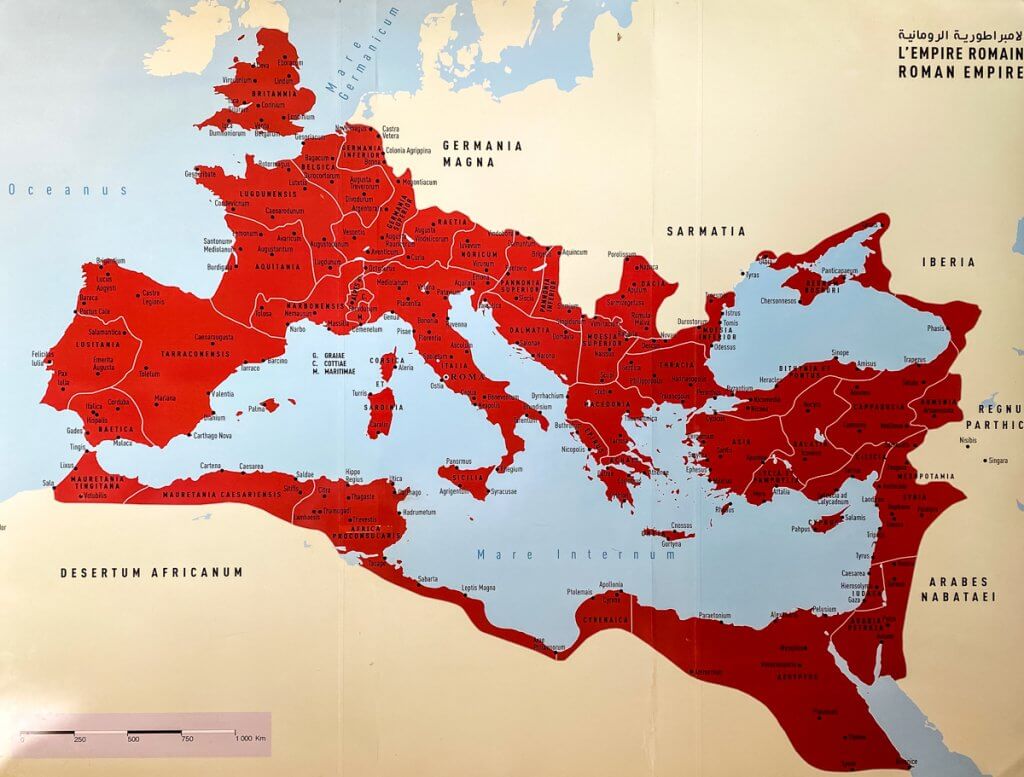
Map of the Roman Empire circa about 100 AD. 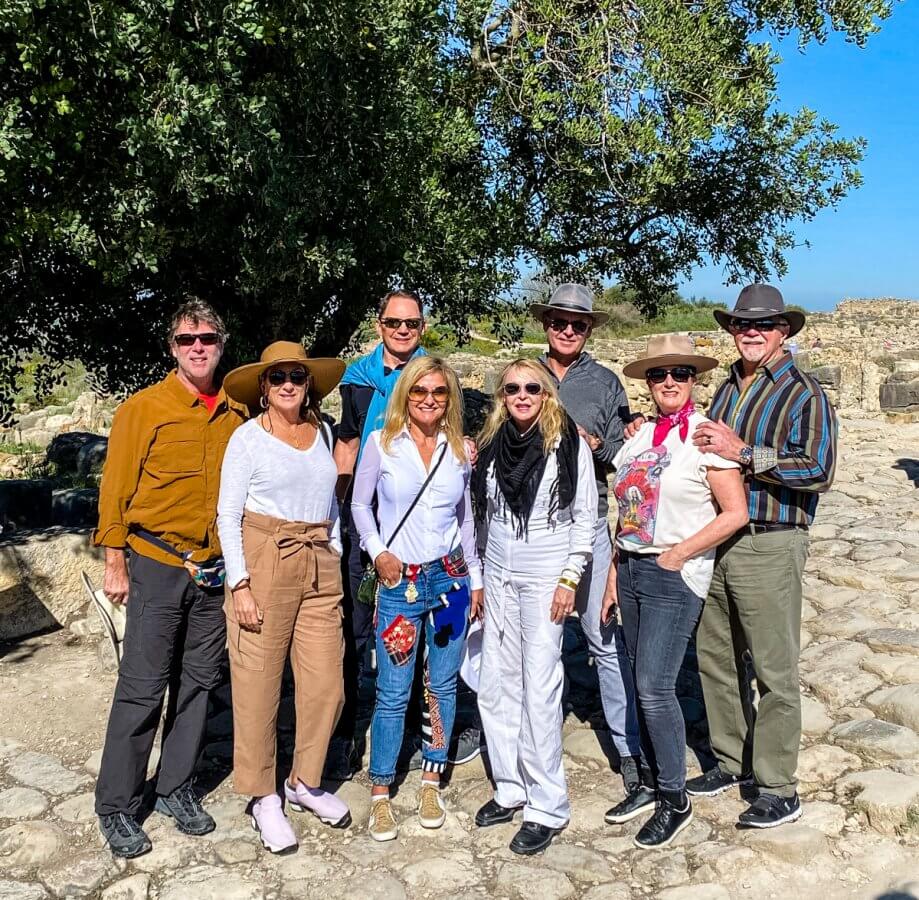
We found some ancient Romans in Volubilis.
With its triumphal arches, basilicas and capitols, the skyline is peppered with well-preserved examples of Roman architecture. And the surrounding landscape of vineyards and rolling fields, was gorgeous in its own right.
However, the greatest treasures were the superb mosaic floors, which have been excellently preserved and left in situ.
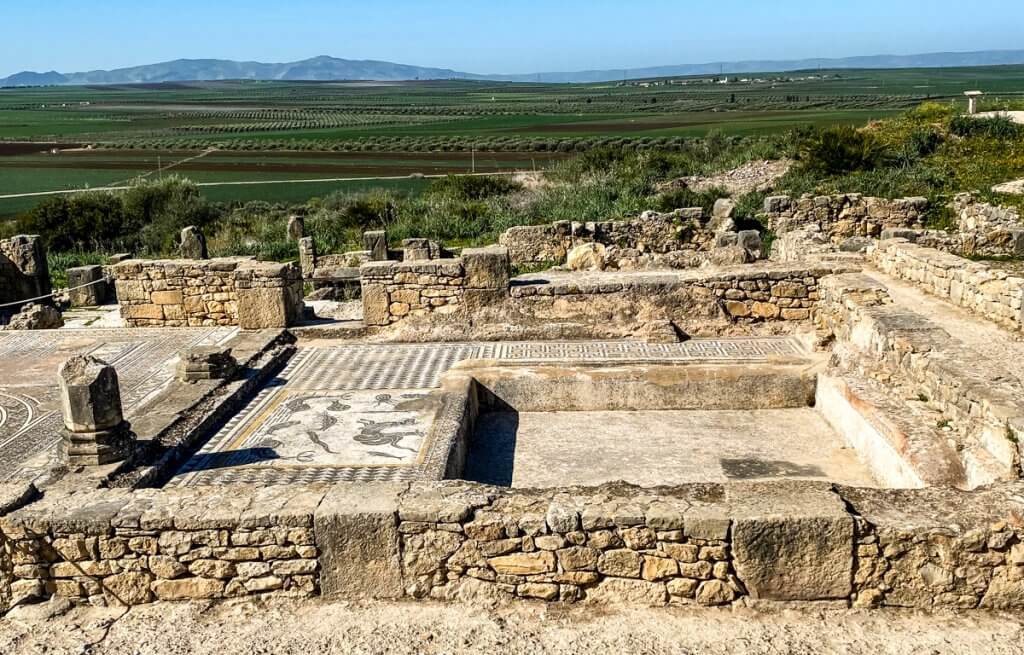
The foundations of fish pond. 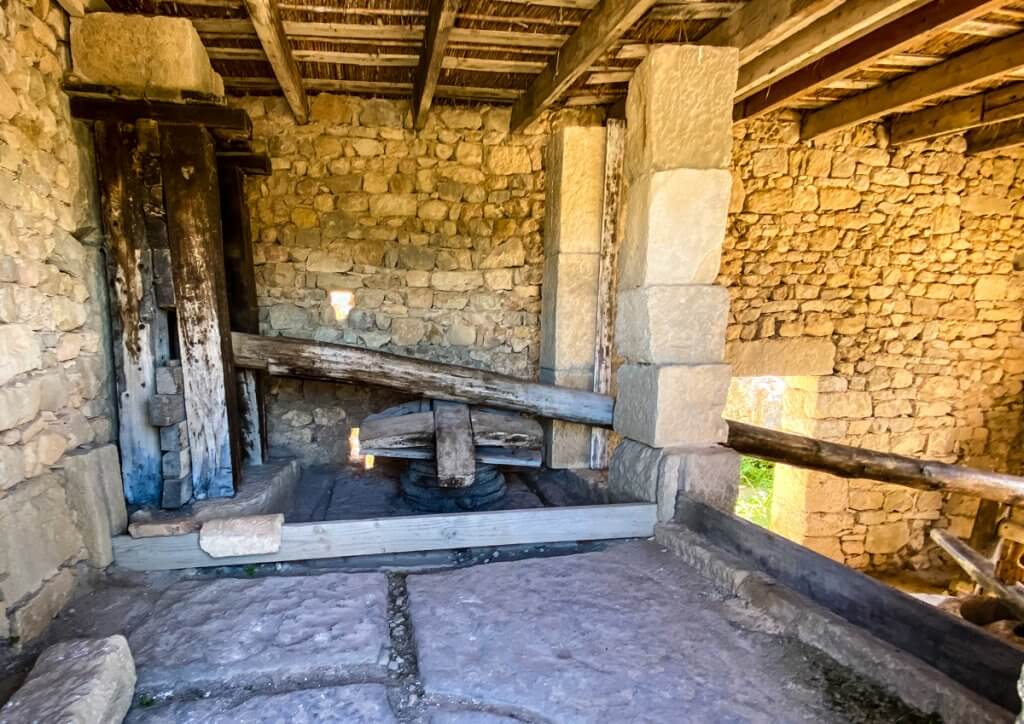
An ancient olive press. 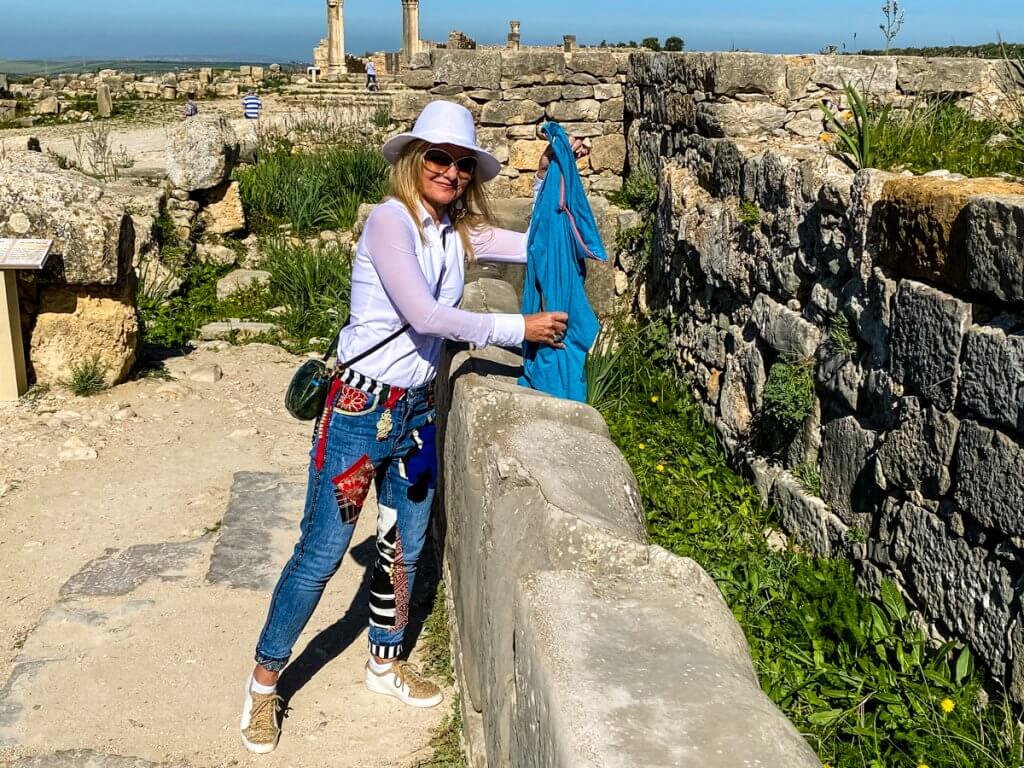
Washing clothes in an ancient washateria. 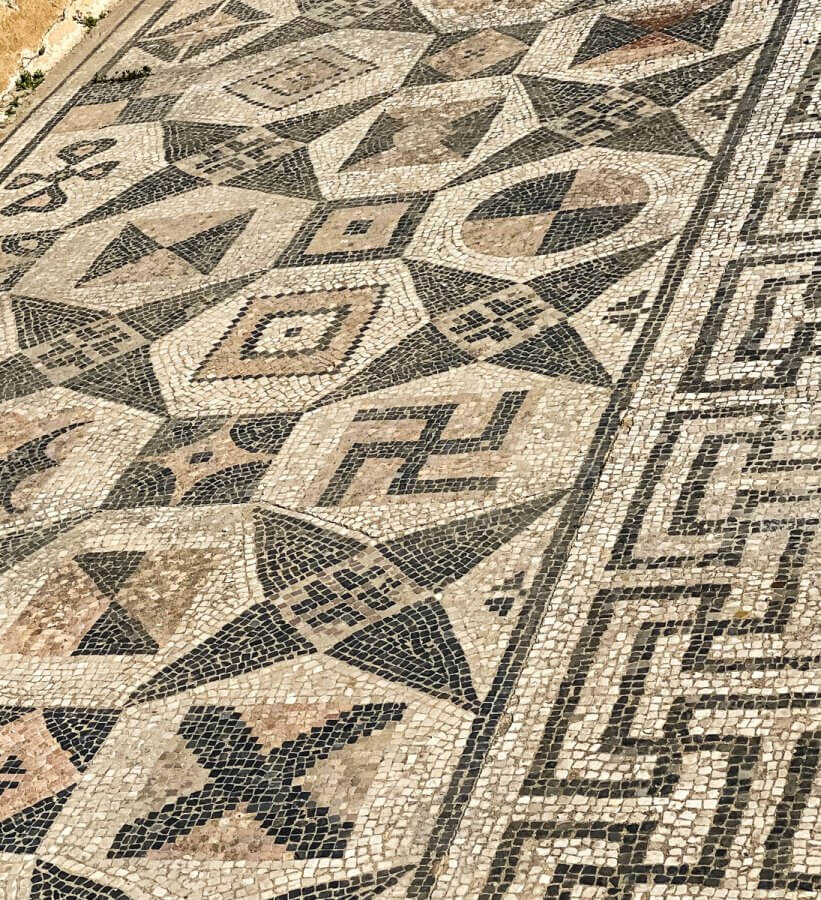
In the western world, the Swastika was a symbol of auspiciousness and good luck until the 1930s when it became a feature of Nazi symbolism. 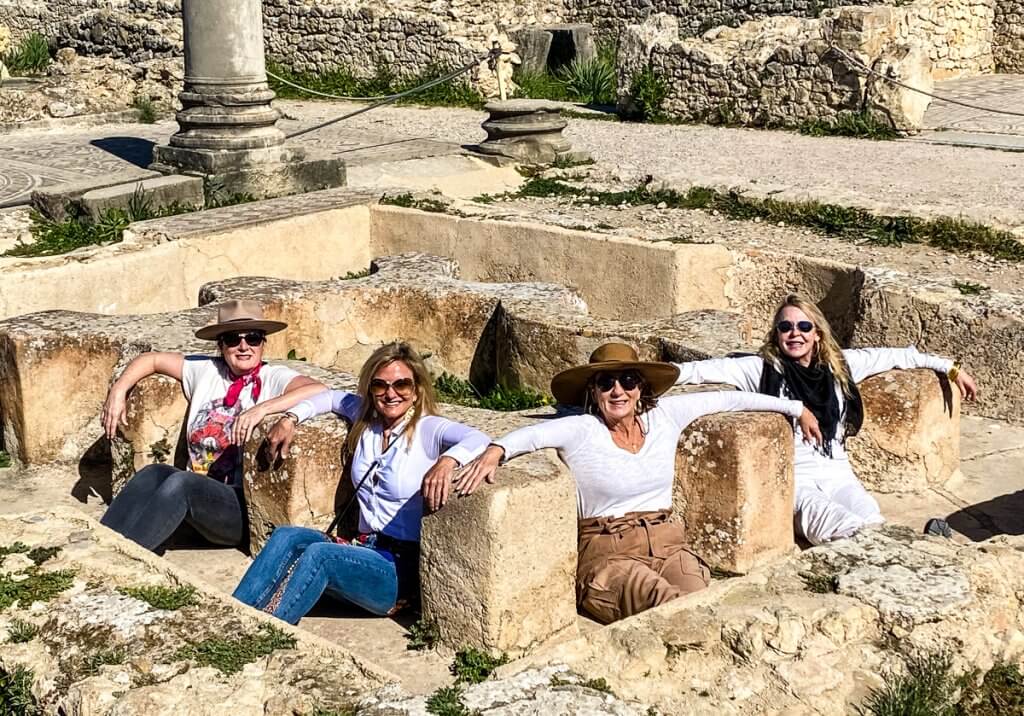
The remains of a hot tub.
Meknes
We continued on to Meknes, another UNESCO World Heritage site and one of Morocco’s great Imperial Cities. Here impressive monuments recall the splendor of a city first built in the 17th century by the powerful sultan Moulay Ismail to rival the court of his contemporary, Louis XIV of France.

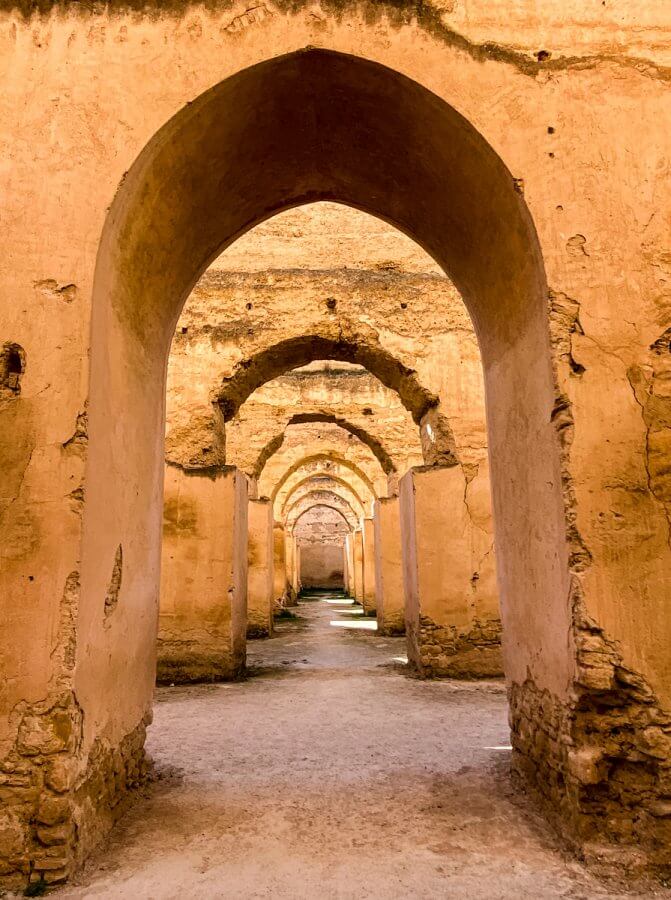
Inside the ancient Royal Horse Stables built to accommodate some 12,000 horses! 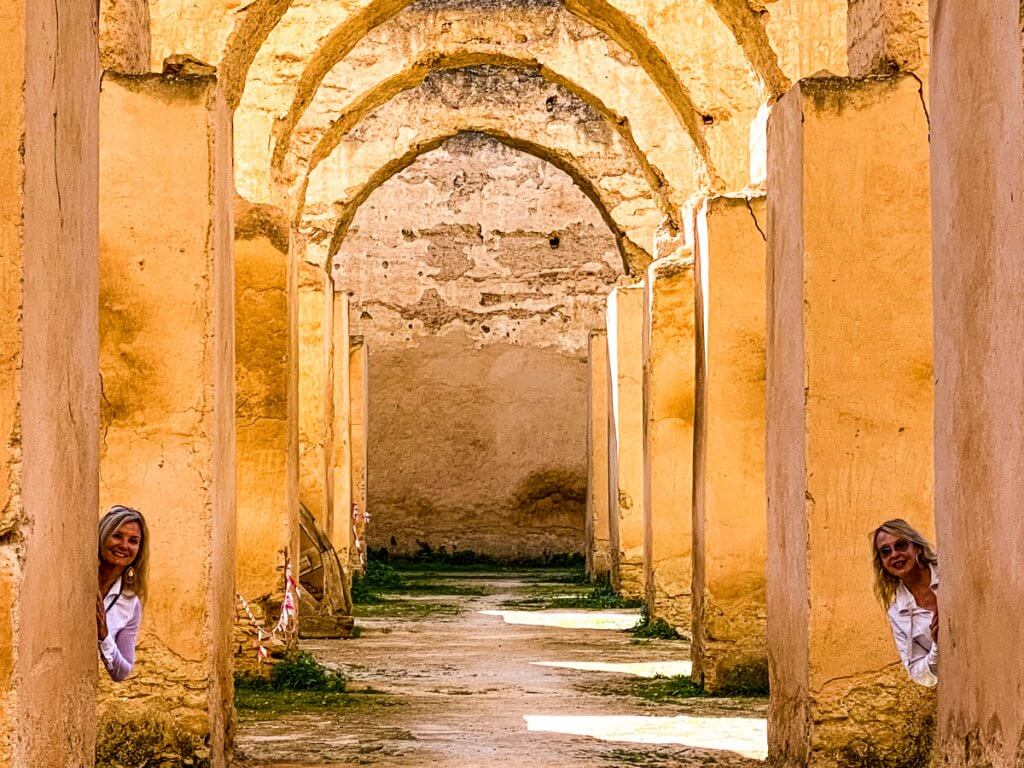
Looking for horses….
Coming Up Next
Desert tent camping, the sand dunes of Erg Chebbi, and of course the Atlas Mountains on our way to Marrakesh. All that and more in our next post! 😉

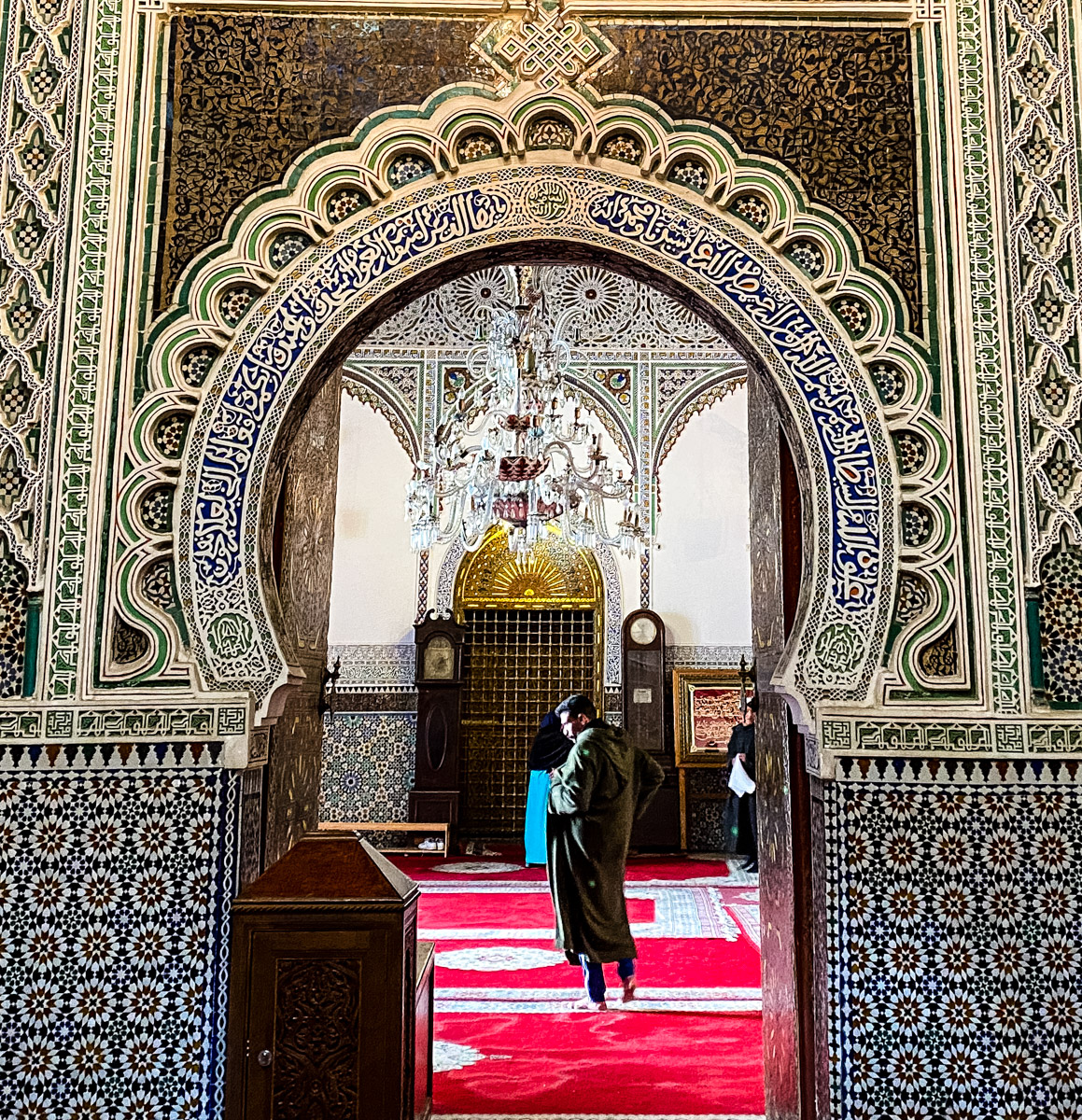

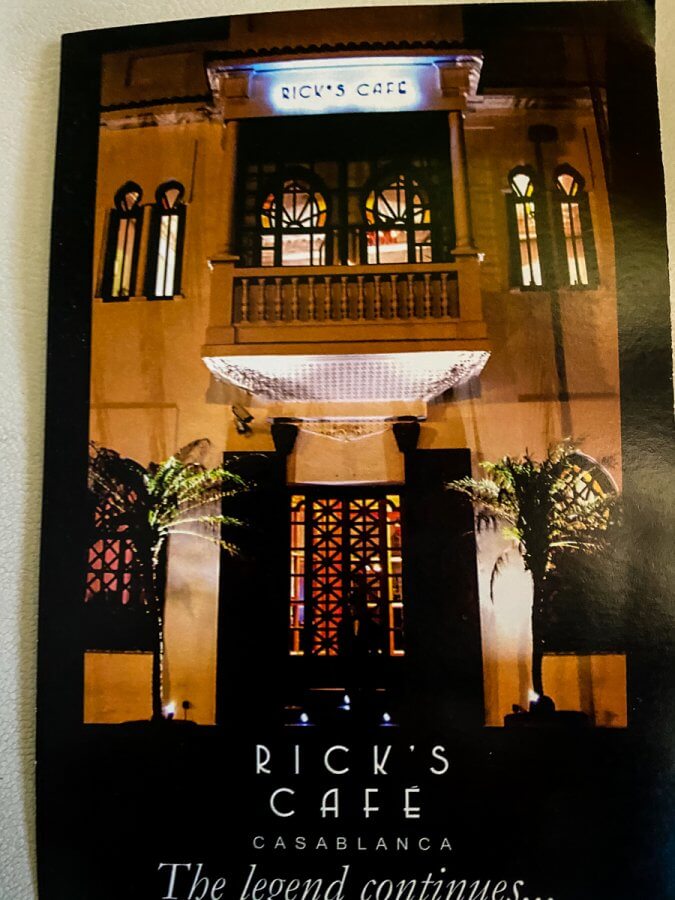
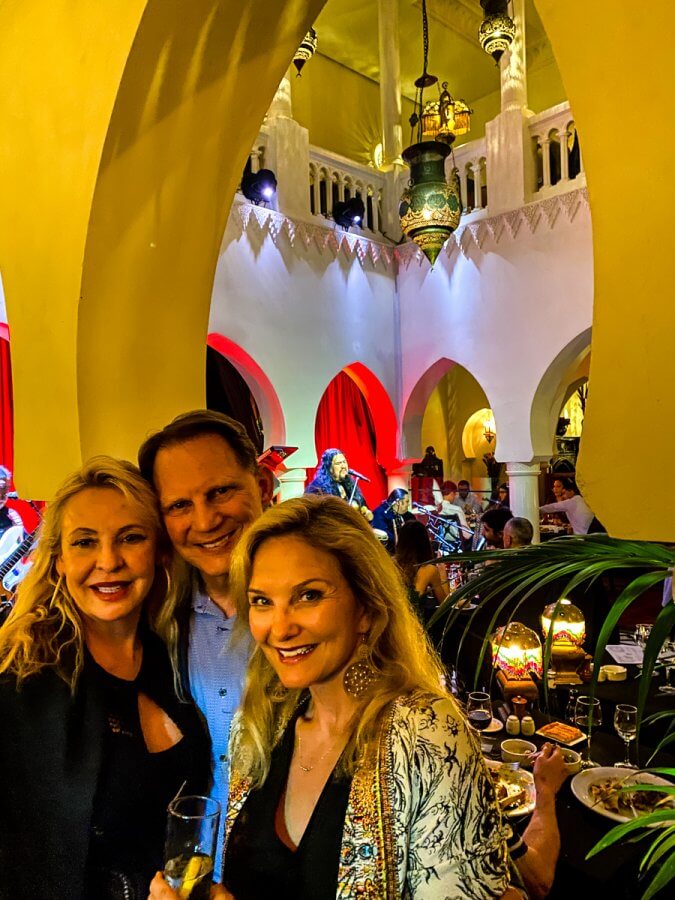
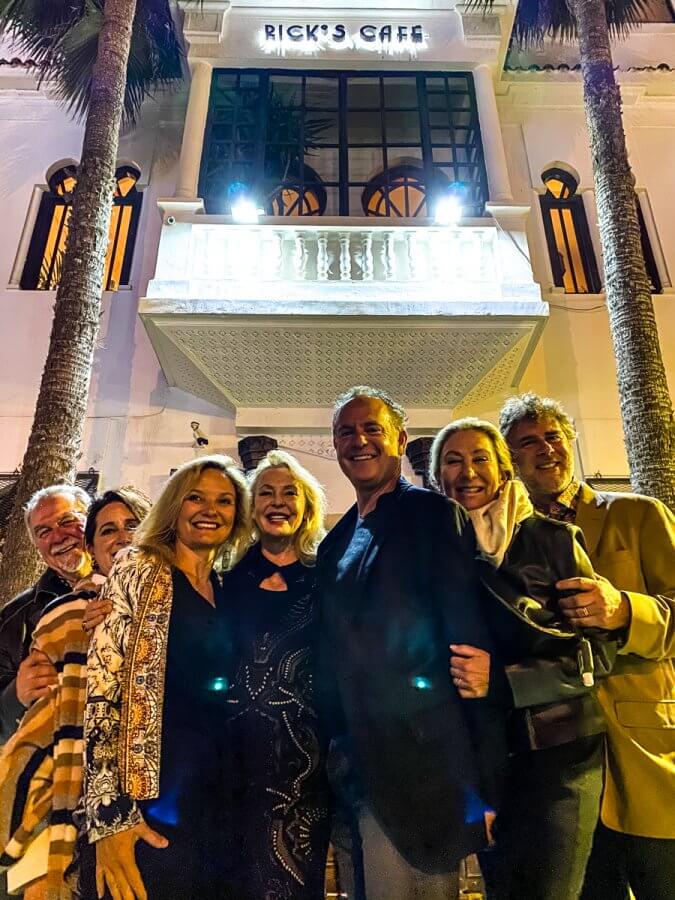
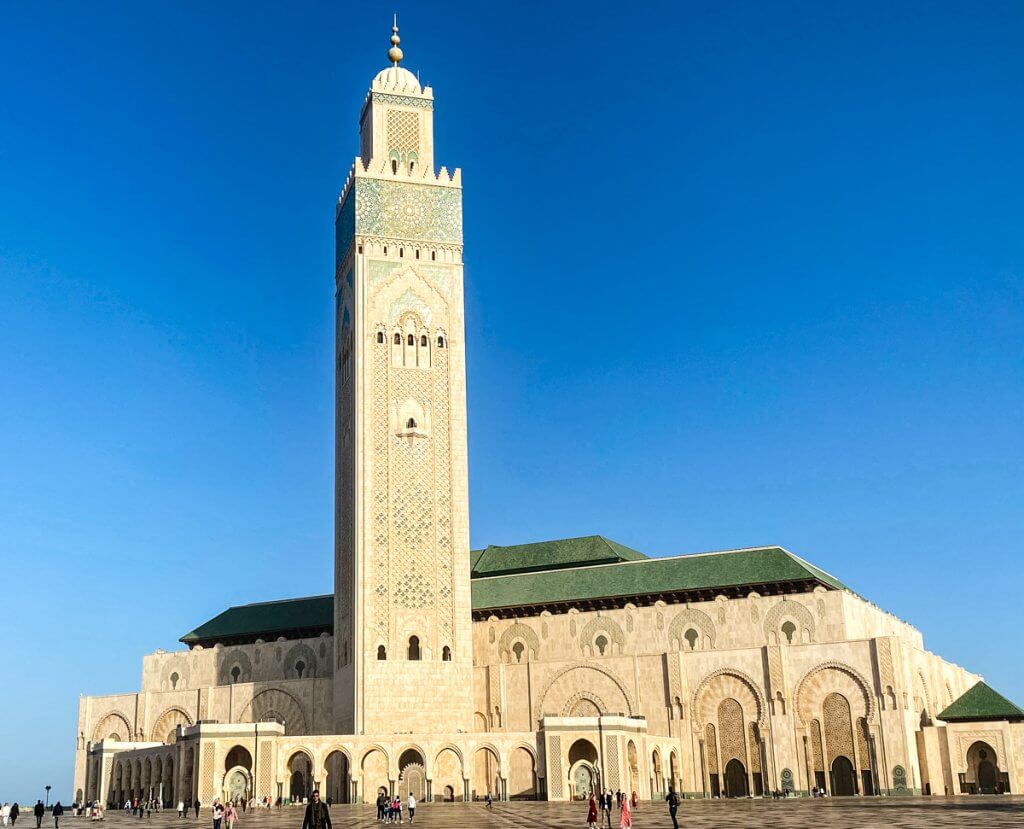
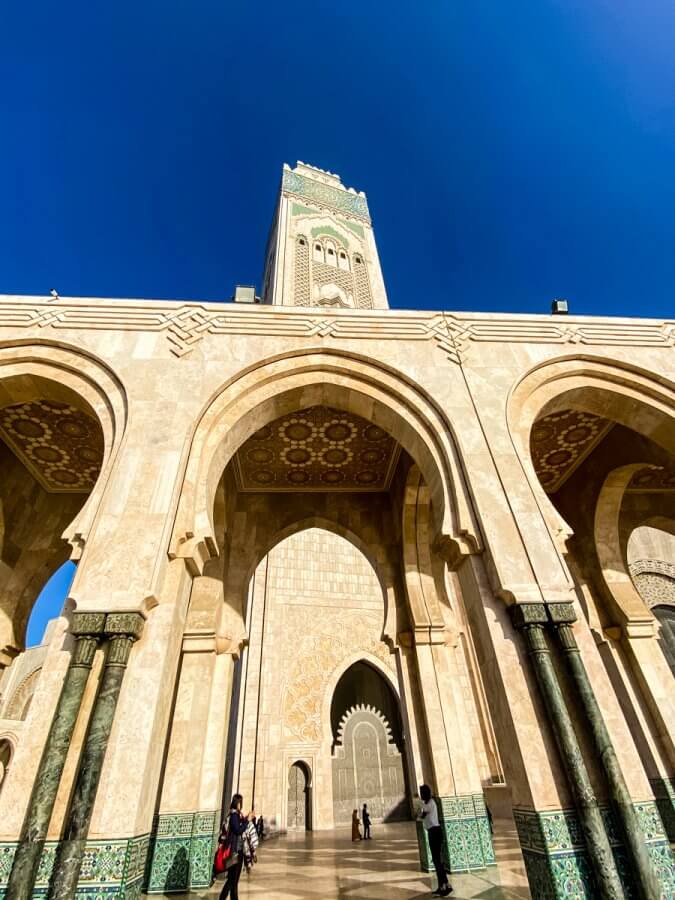
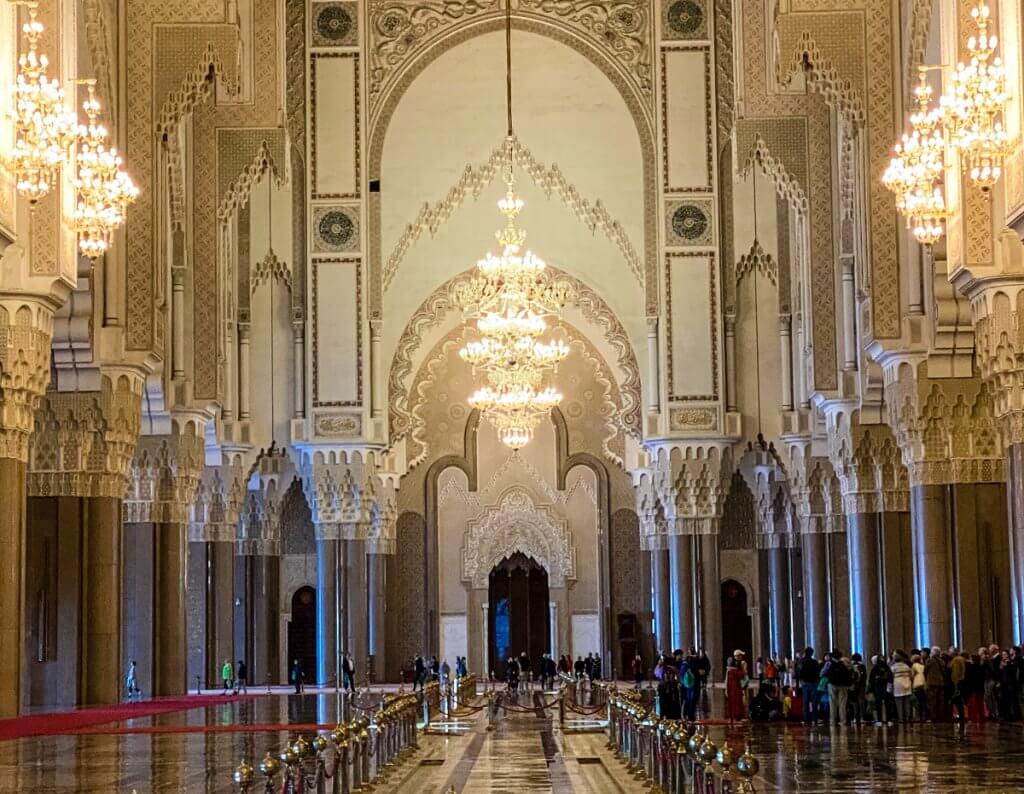
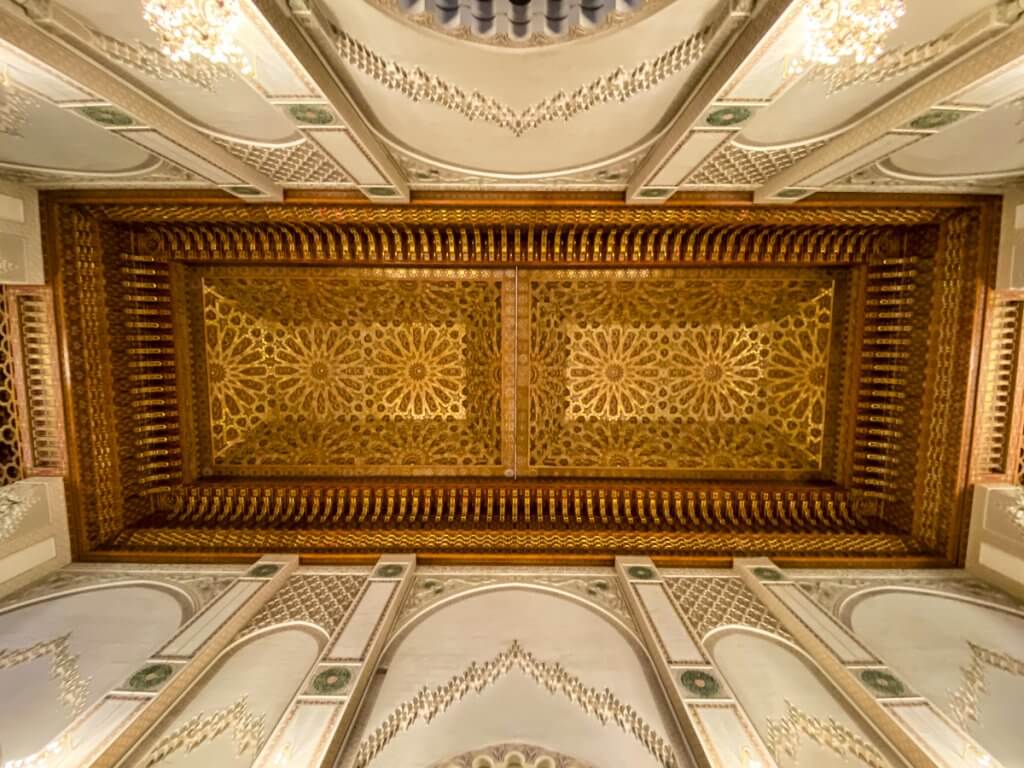
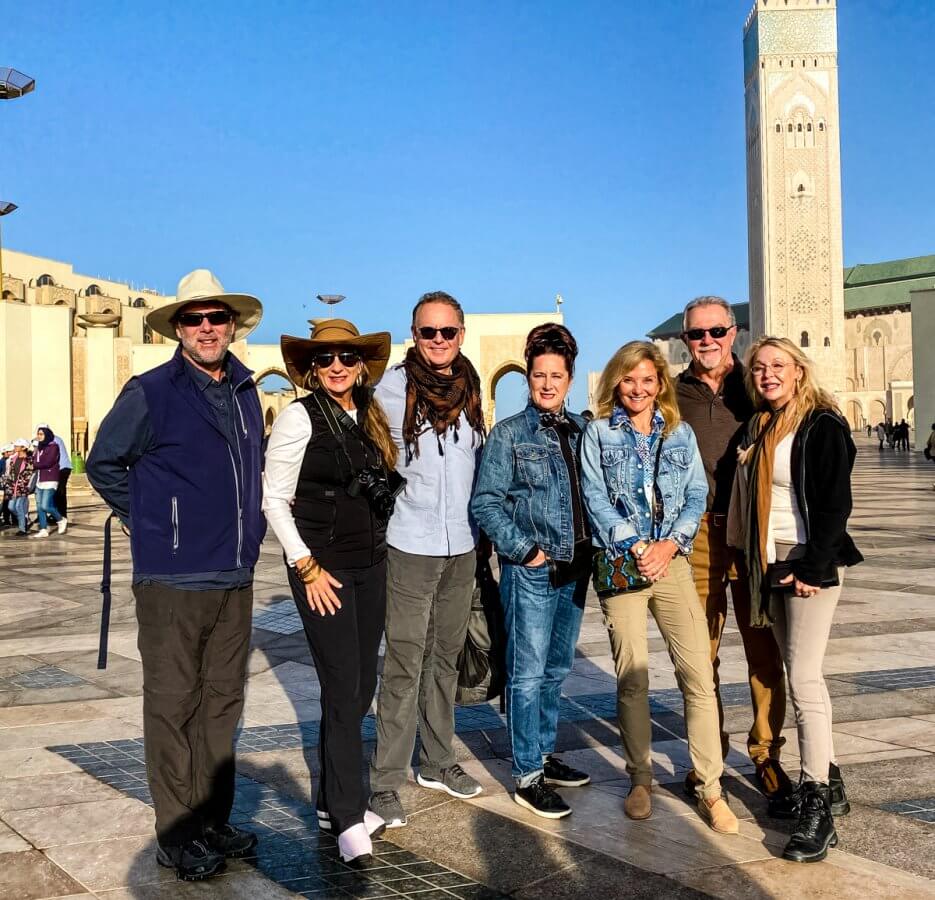
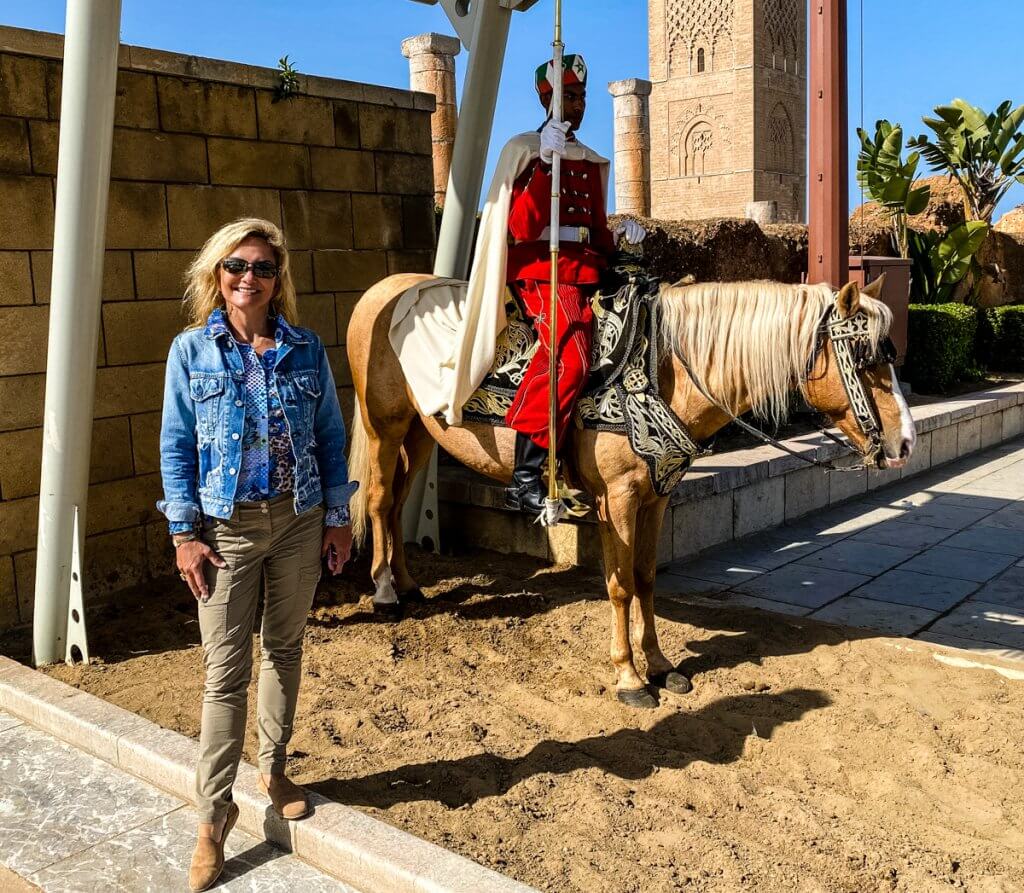
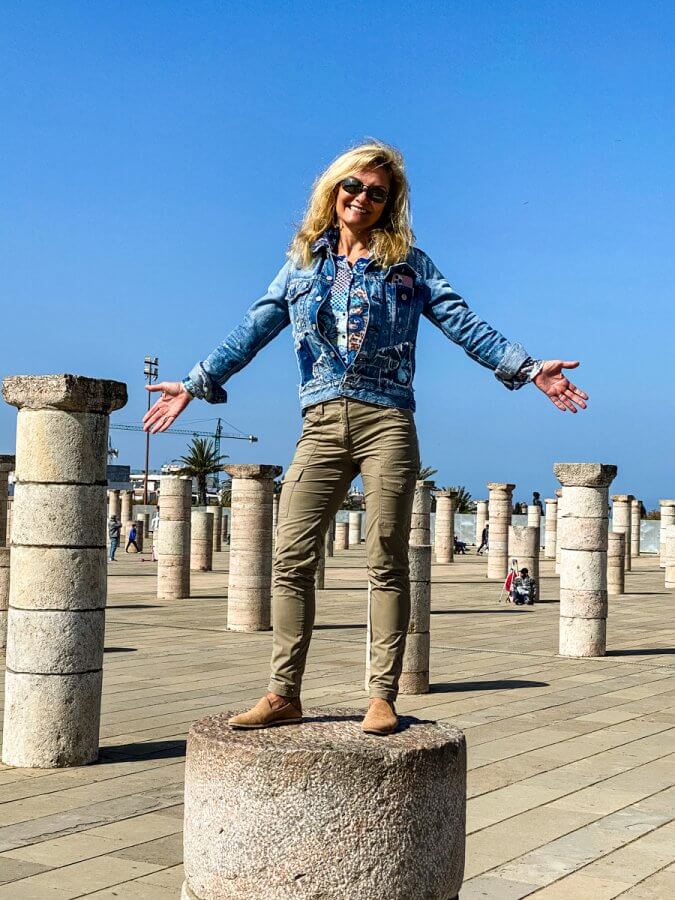
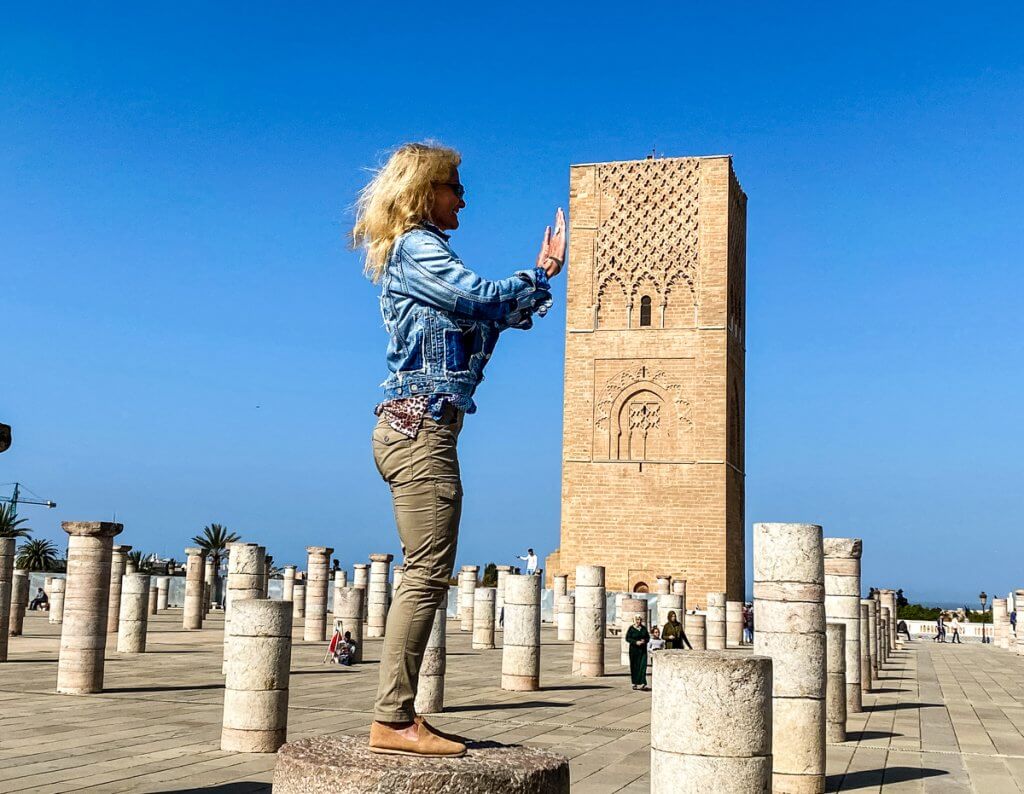
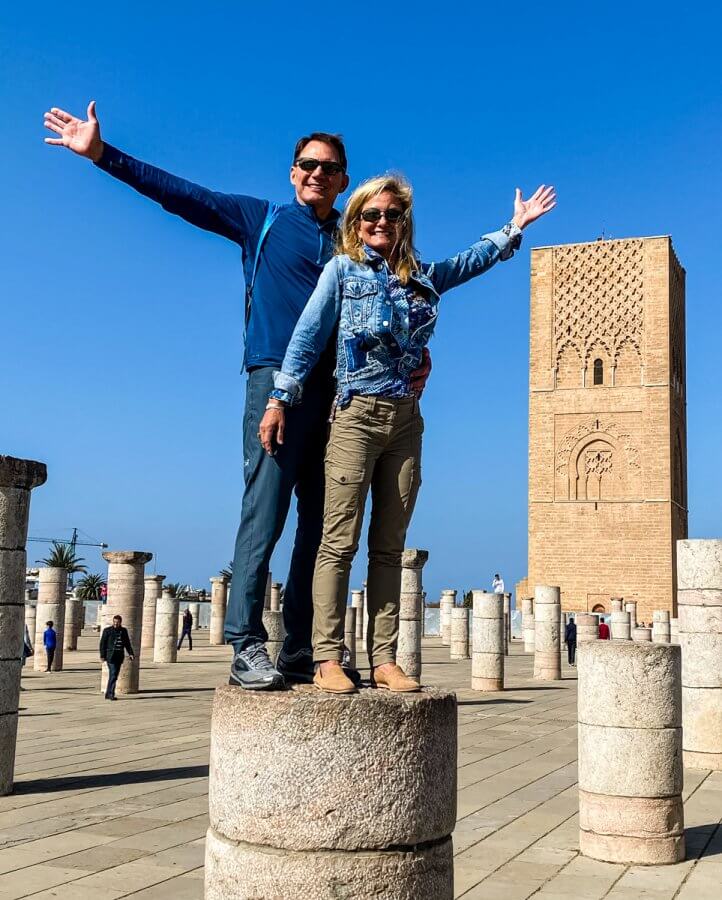
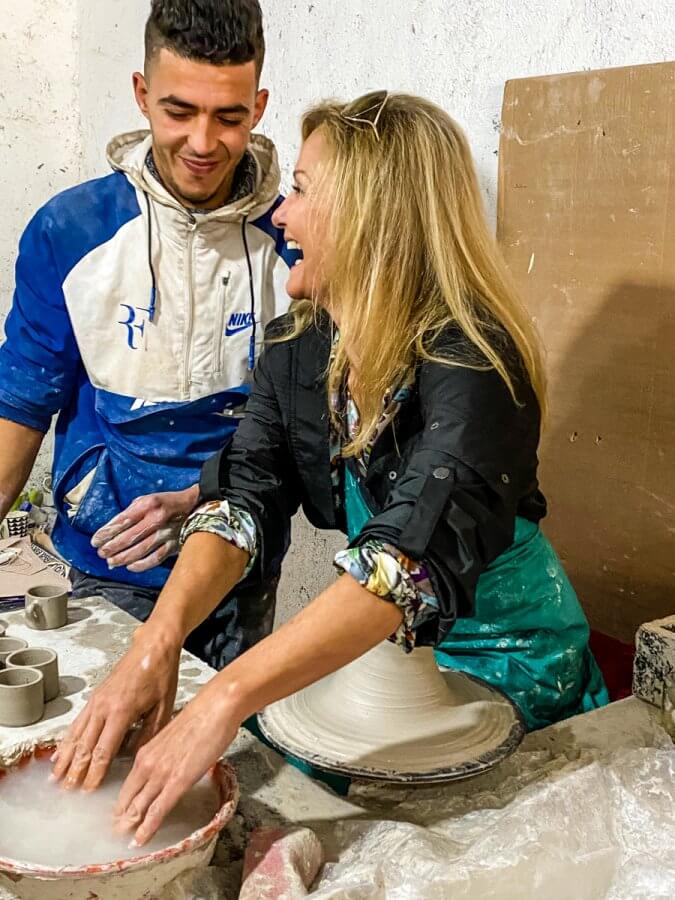
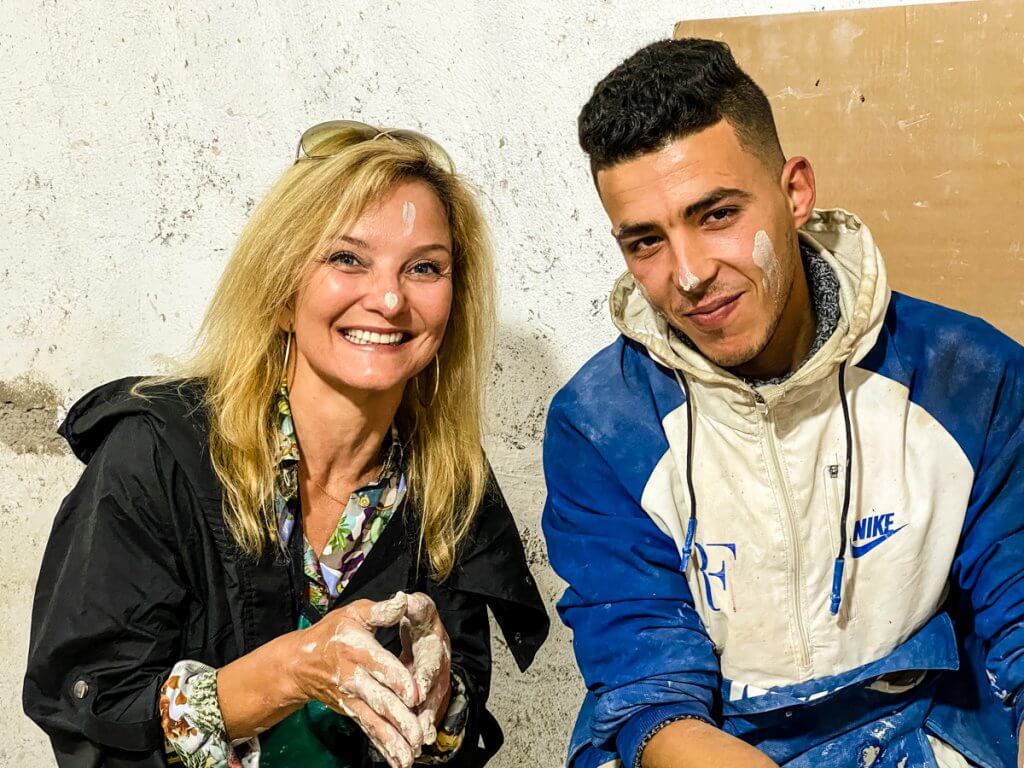
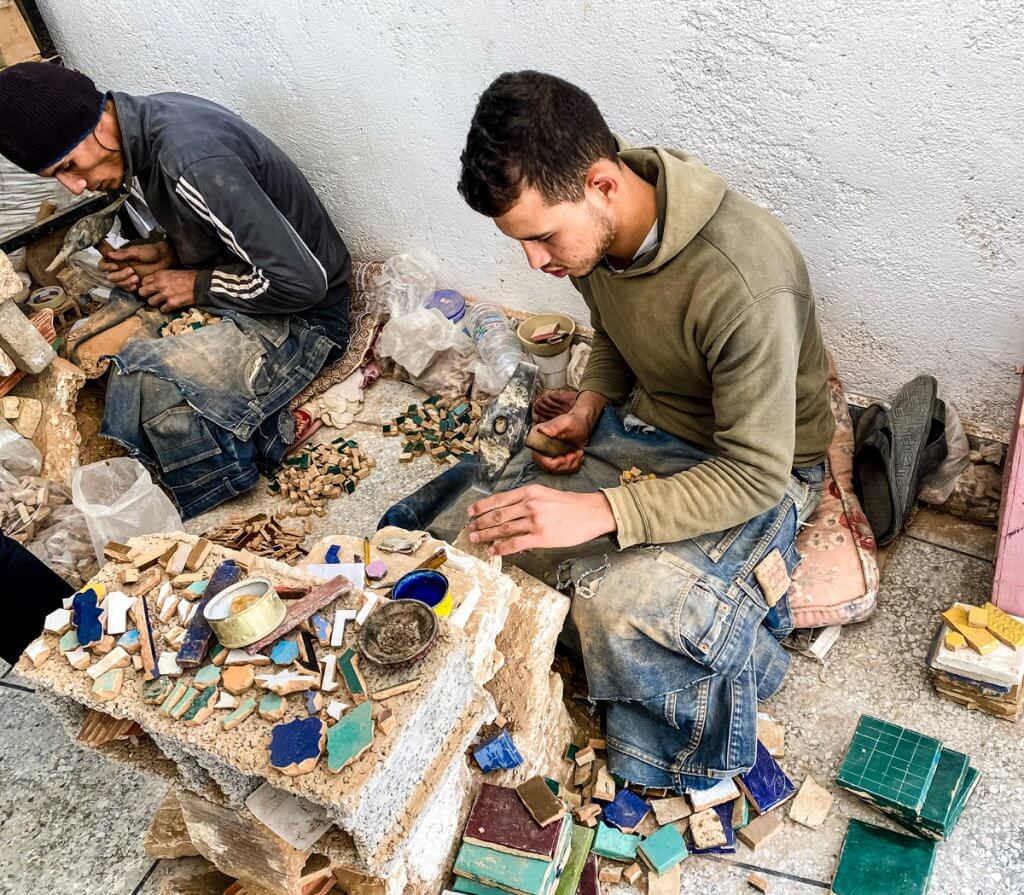
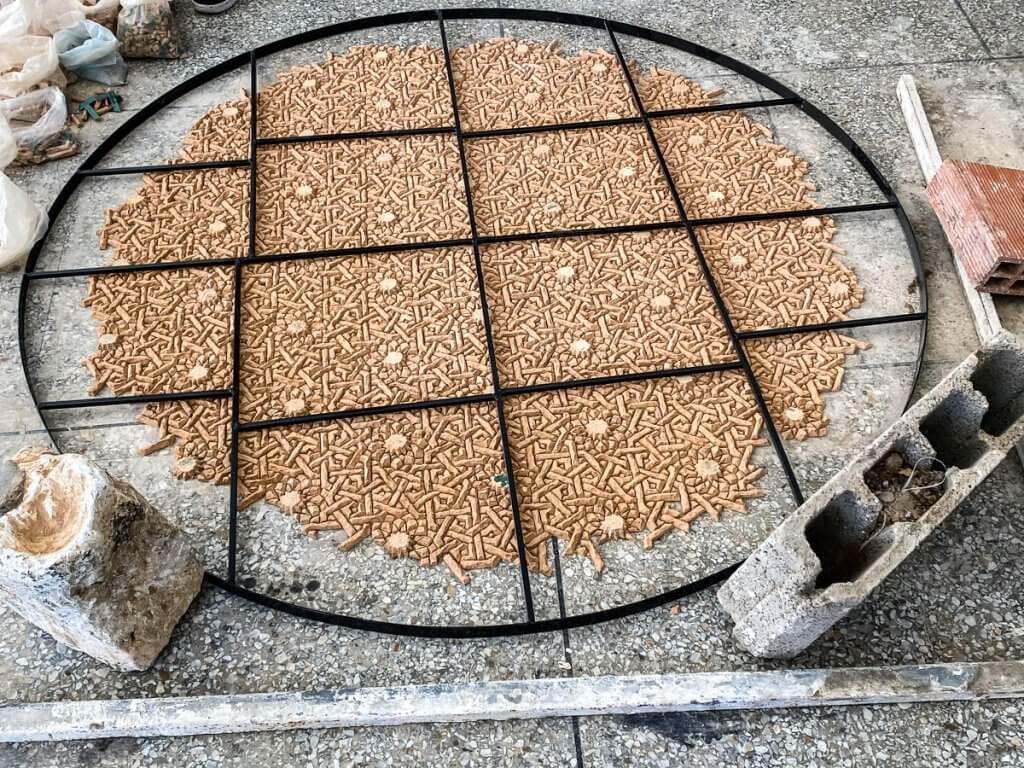
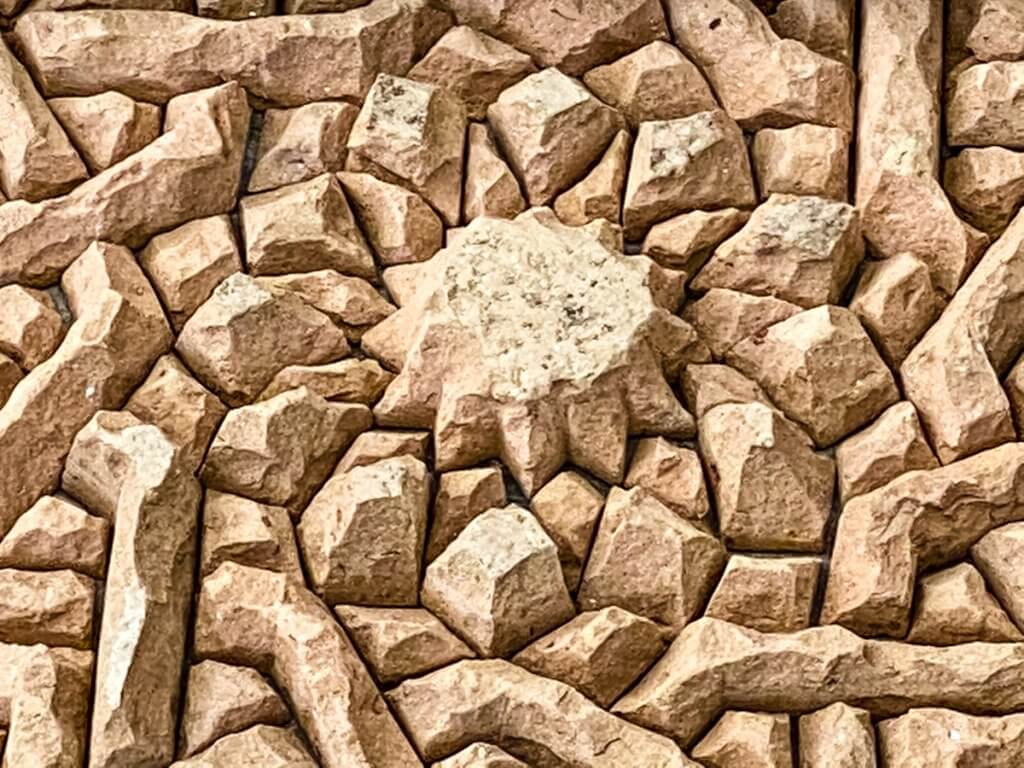
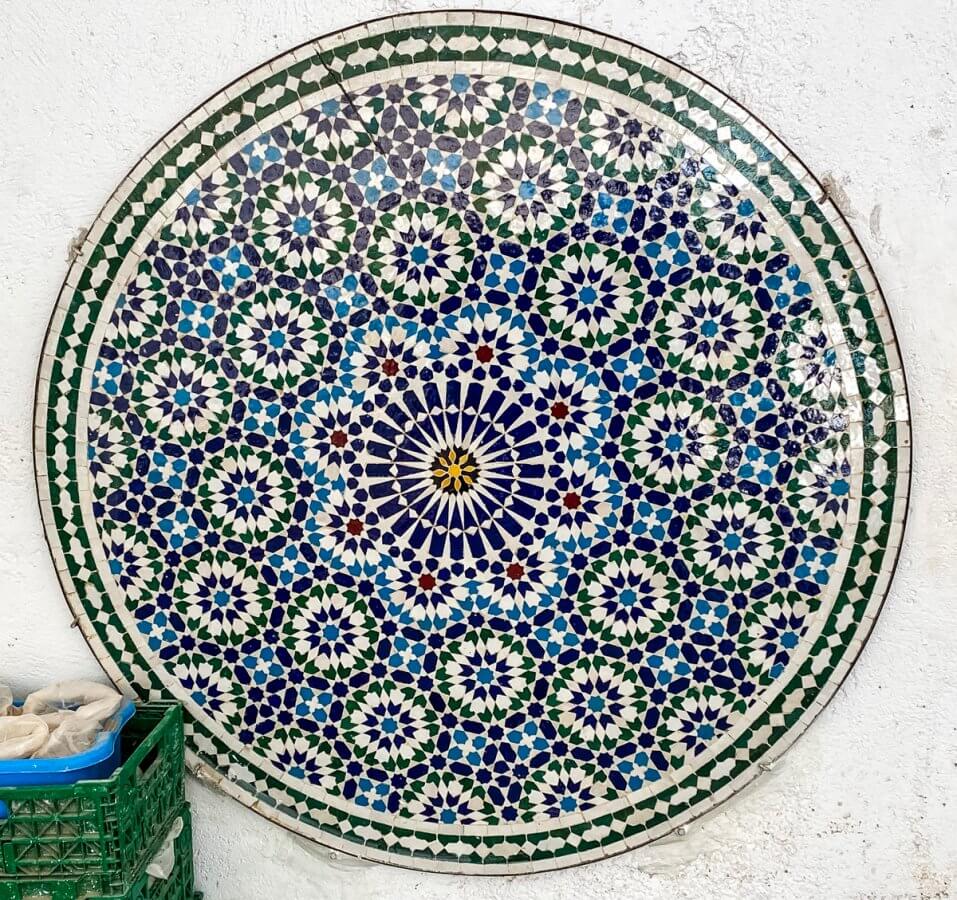










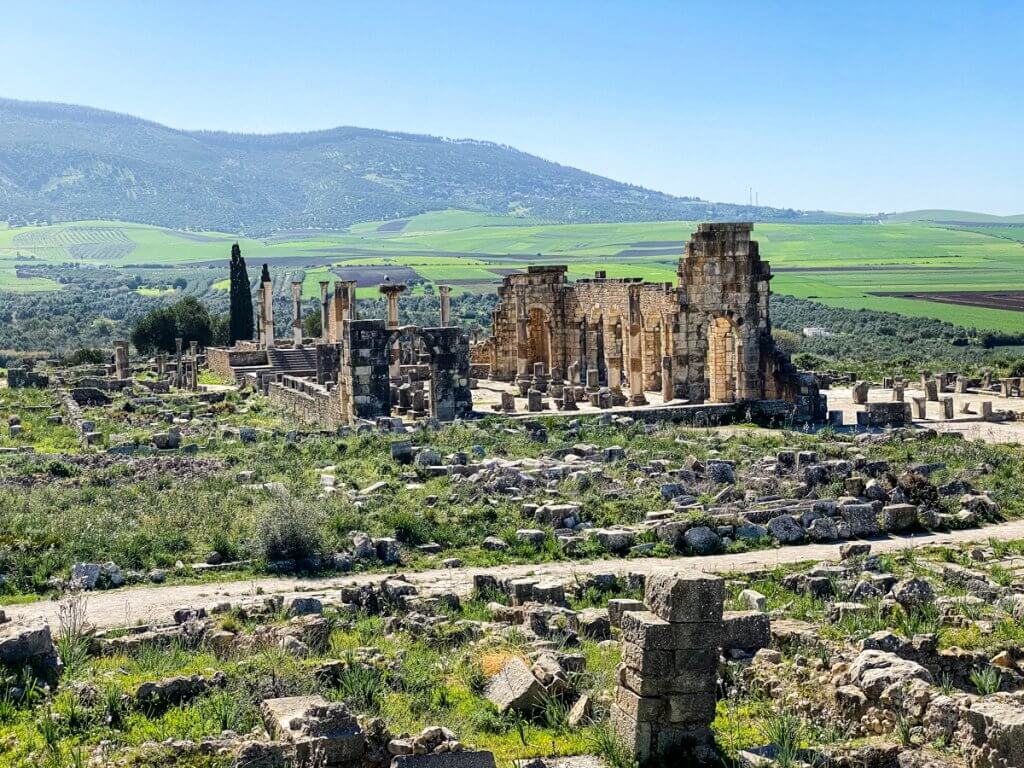
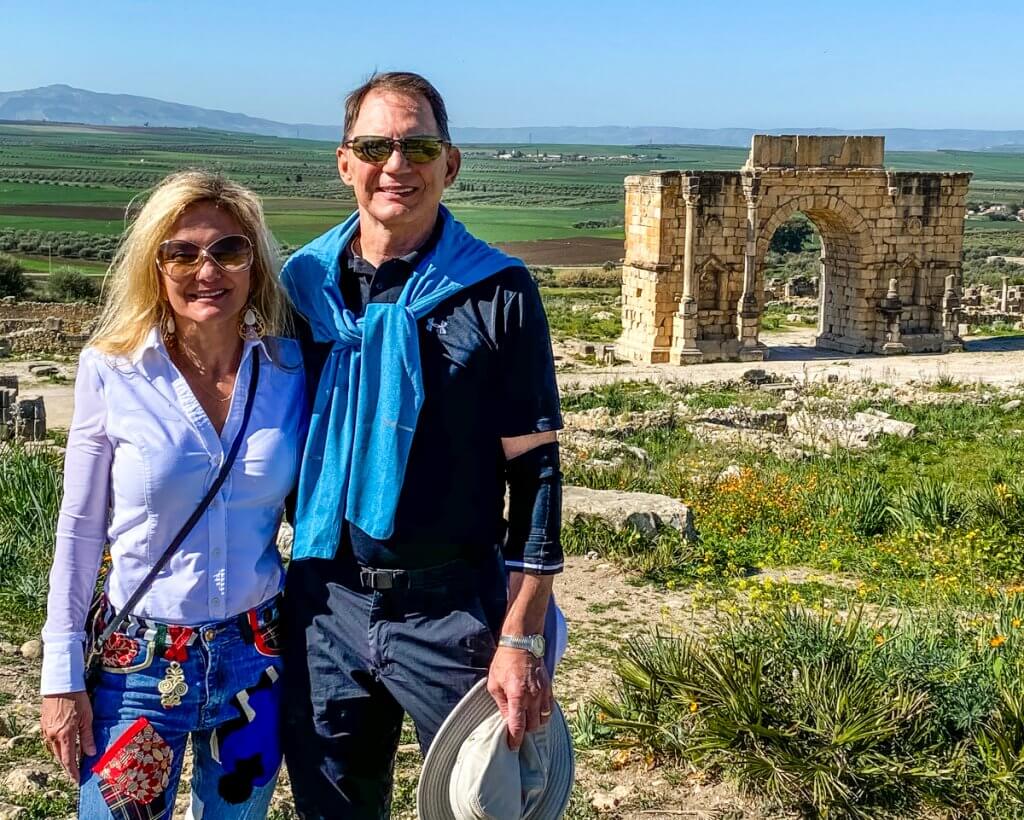
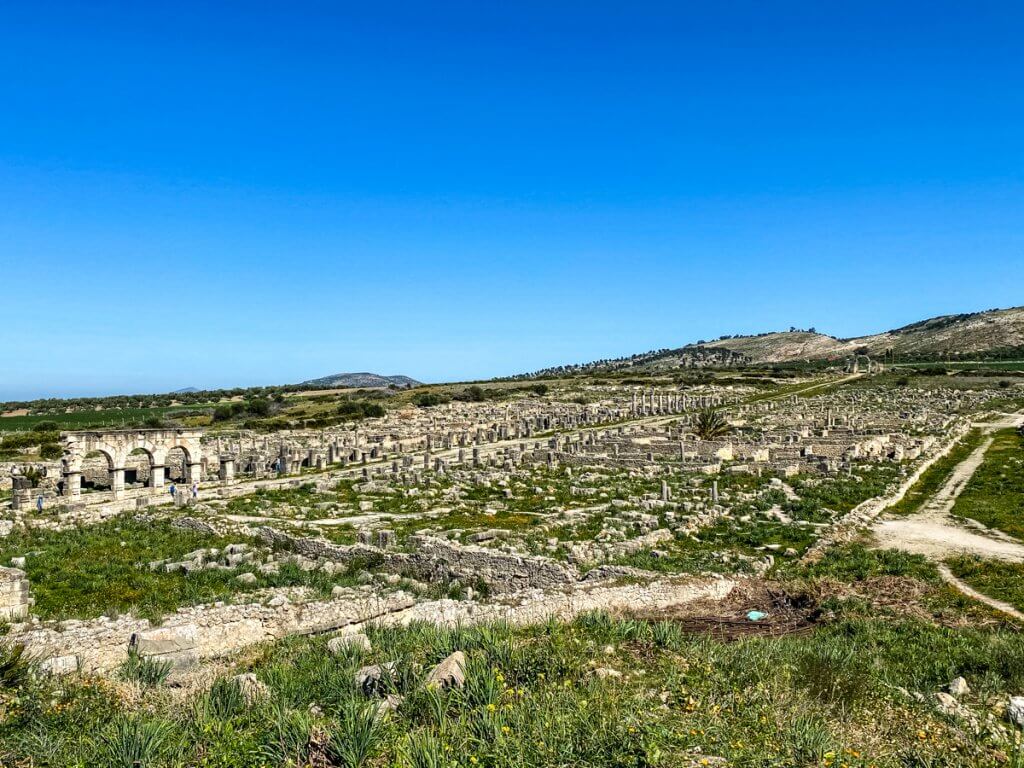
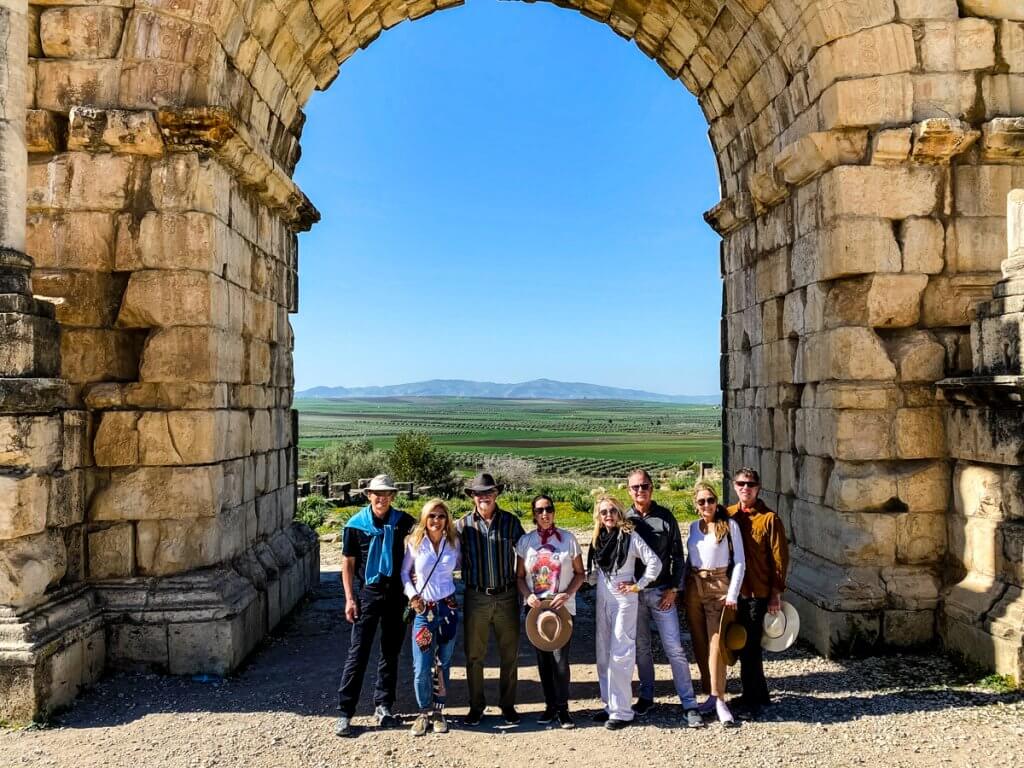





You will enjoy the Yves St Laurent Gardens when you get to Marrakesh.
OOOOH I would have loved to have been with you there, especially the Roman ruins and mosaics
XXXX Val